
A MOTIVATE PUBLICATION DHS 25.00 OR 2.70 BD 2.60 SR 25.00 KD 2.10 identity.ae
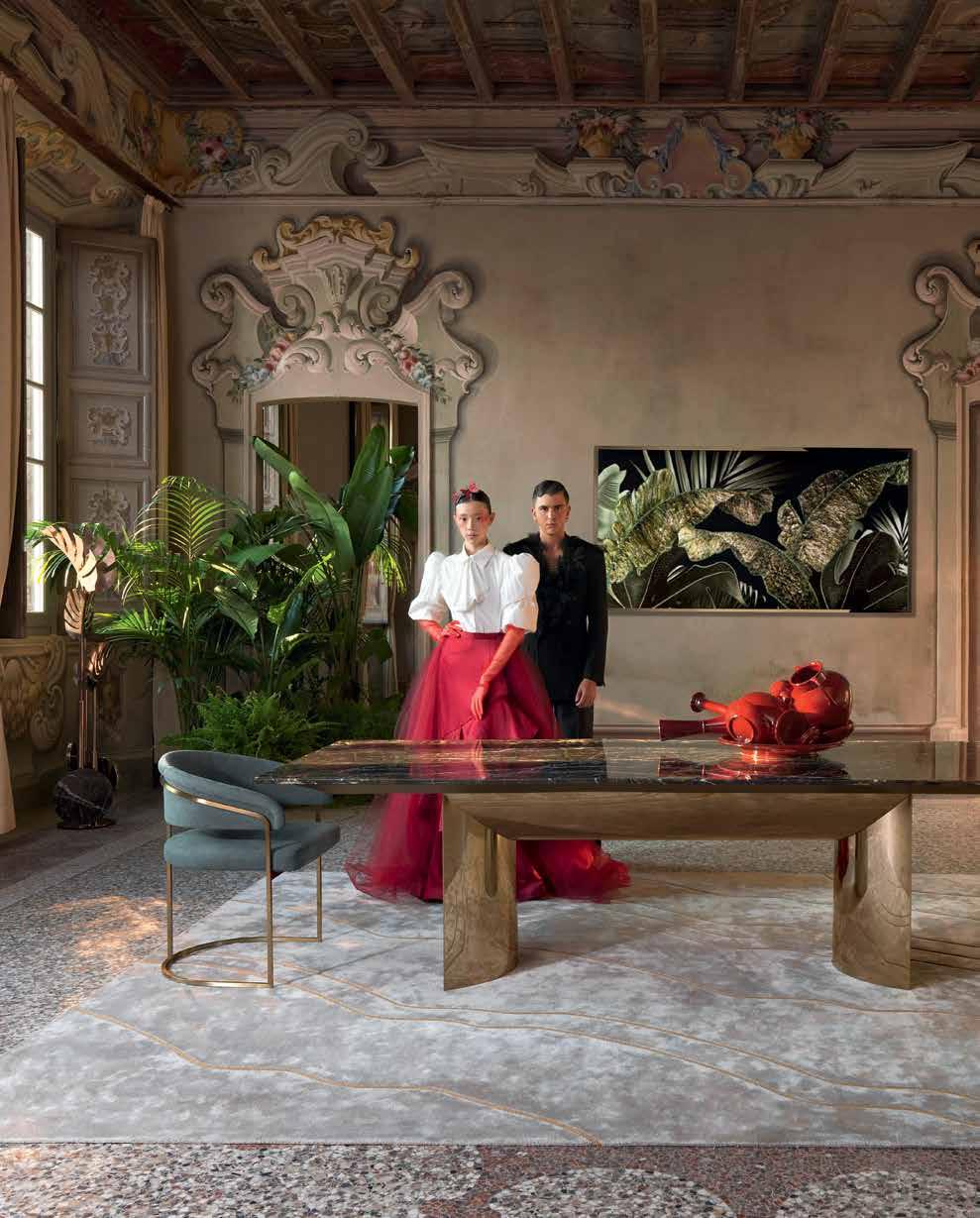



12
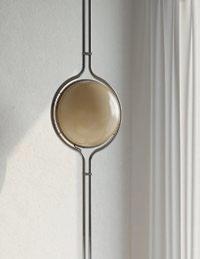
Upcycled
matter
Sëbou’s latest collection of handmade rugs uses upcycled fabrics from Eton
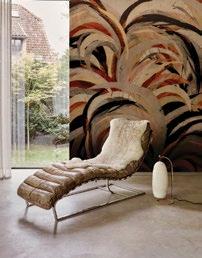
20 Rituals of movement
OMA designs the scenography for the world’s first Islamic Arts Biennale in Jeddah
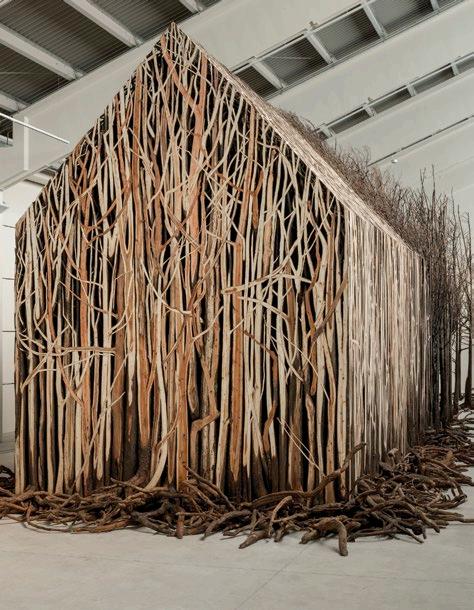
24
Industrial spirit
51-1 Arquitectos has refurbished a former ice factory into a cultural centre in Kalba
30 The life of objects
KAMEH exclusively reveals its collaboration with Polish illustrator Ellie
34 Art through the ages
Abdul Rahman Al Zayani is auctioning his pioneering art collection at Sotheby’s
46
A sense of
rhythm
This Dubai home has been transformed into a haven for indoor/outdoor living
54 Beachfront glamour
Urjowan Interiors has transformed this Dubai penthouse into a luxury vacation home
60 Features Regulars Design Focus Products Library #idmostwanted 40 70 72 74 24 40 contents

Oikos Atelier Dubai The Opus, Tower A, office 1205 Al A’amal St, Business Bay - Dubai T +971 4 589 3332 | M + 971 52 556 7376 atelierdubai@oikos.it | oikos.it
in Italy Entrances
by You
Made
Designed
Hall C4 - Stand 530
Editor-in-Chief
Obaid Humaid Al Tayer
Managing Partner and Group Editor
Ian Fairservice
Editor
Aidan Imanova
Senior Art Director
Olga Petroff
Sub-editor
Max Tuttle
Chief Commercial Officer
Anthony Milne
Group Sales Manager
Manish Chopra
Senior Sales Manager
Sharmine Khan
Sales Representative - Italy
Daniela Prestinoni
General Manager - Production
Sunil Kumar
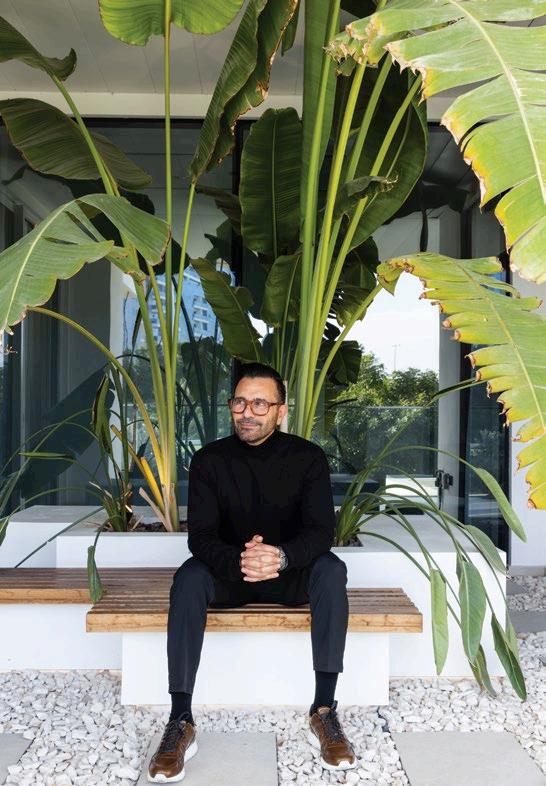
Production Manager
Binu Purandaran
Production Supervisor
Venita Pinto
Contributors
Aasiya Jagadeesh
Aisha Zaman
Karine Monié
Head Office: Media One Tower, PO Box 2331, Dubai, UAE; Tel: +971 4 427 3000,
Fax: +971 4 428 2260; E-mail: motivate@ motivate.ae
Dubai Media City: SD 2-94, 2nd Floor, Building 2, Dubai, UAE
Tel: +971 4 390 3550 Fax: +971 4 390 4845
Abu Dhabi: PO Box 43072, UAE, Tel: +971 2 677 2005; Fax: +971 2 677 0124; E-mail: motivate-adh@motivate.ae
Riyadh: Office 452, Regus Offices, 4th Floor, Al Hamad Tower, King Fahad Road, Al Olaya, PO.Box 12381, Riyadh 6764, Kingdom of Saudi Arabia; Tel: +966 11 834 3595 / +966 11 834 3596; Fax: +966 11 8343501
London: Acre House, 11/15 William Road, London NW1 3ER, UK; E-mail: motivateuk@motivate.ae

® contents 46
identity
Photography by Aasiya Jagadeesh
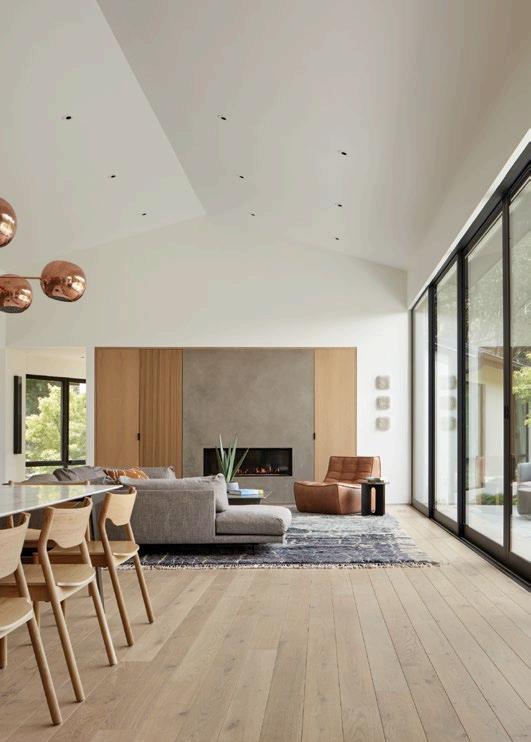
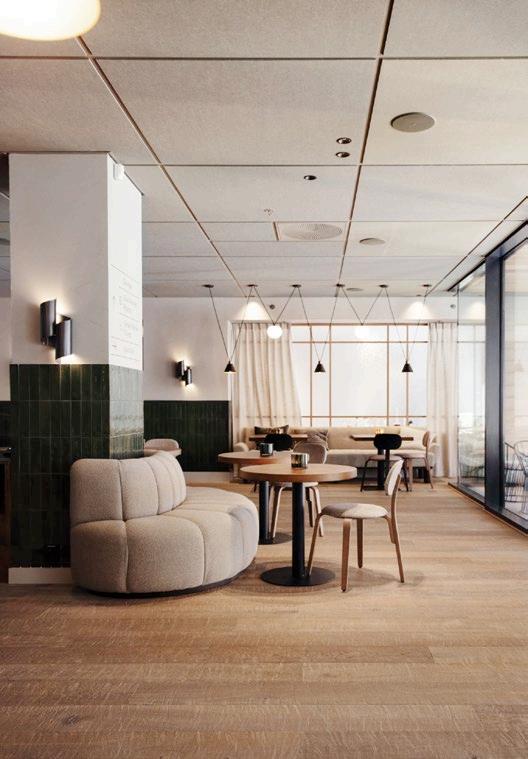
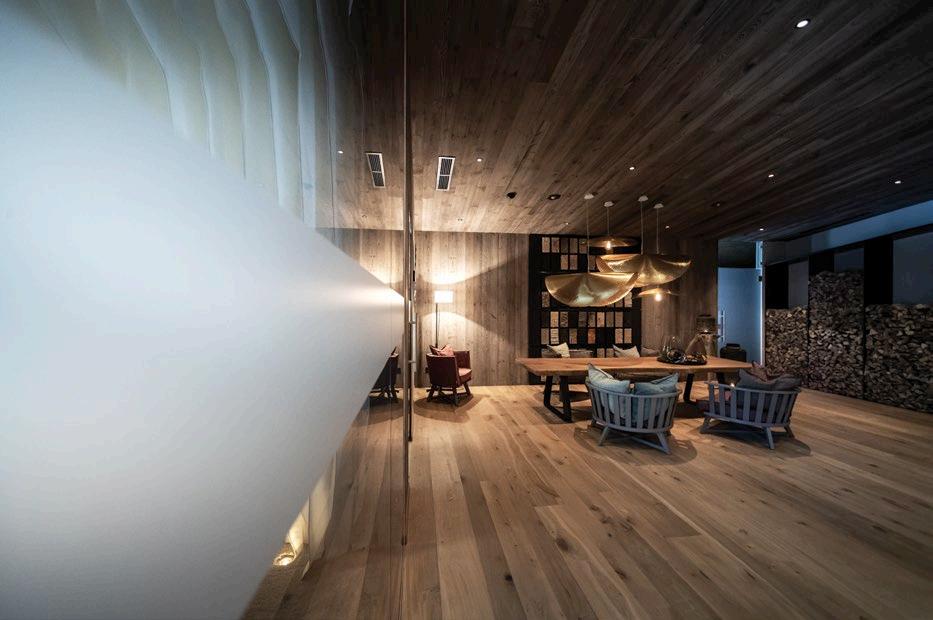


LOBOLISTONE.AE
Editor’s Note
For months now we have been keen to feature a custom artwork on the cover of identity’s ‘Art Issue’ that merges the worlds of art and design, and our partnership with KAMEH this month does just that. The exclusive cover design is illustrated by Warsaw-based artist Ellie and is part of a wider project by the Dubai-based collectible design brand to bring its objects to life without using people or physical props.
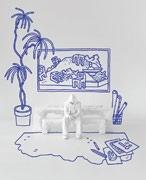
“I started to think about how I could possibly show the functionality of the objects without models and the usual styling props,” KAMEH’s founder and creative director shared. “The only way in my head was to collaborate with an artist who could draw using the photographs of the objects.” Discovering Ellie’s work led to this merging of two worlds that is dear to the brand’s DNA. “These images represent the world we live in today,” KAMEH said. “In some pictures, it’s an office desk; in others, a person taking a selfie in the mirror. It’s our life, the life we are living now.”
In other parts of the magazine, we speak to prominent art collector Abdul Rahman Al Zayani in the lead-up to the auctioning of his impressive art collection at Sotheby’s – one that documents artists from the Middle East, starting from the modern era to the present.
“I believe an art collection should evolve, engage and change hands,” he told identity. “As I open the doors to my painstakingly curated art assemblage, I am…excited for their journey into new homes, to be rediscovered and appreciated.”
Besides the growing private art market in the region, public institutions are also widening their offering with the opening of new art museums, galleries, centres and events. One such spaces is the new Kalba Ice Factory in Sharjah, which has been transformed from an industrial ruin into a cultural space equipped for large-scale installations. In another part of the Gulf, Jeddah’s inaugural Islamic Art Biennale offers an unprecedented approach in commissioning, showcasing and surveying Islamic Art, spanning architecture, design, visual arts and historic objects.
“This is an historic moment not just for Saudi Arabia but for the entire Muslim world,” Sumayya Vally, artistic director of the Biennale said. “At its essence, this Biennale is about giving contemporary objects a home by giving them a lineage, and giving historic objects a home by giving them a future.”
And as regional fairs such as Art Dubai continue setting art and artists from the Global South at the forefront of their commissions and programmes, it is our hope that the works and talents from this part of the world will only gain further appreciation and recognition.
On the cover:
Exclusive cover featuring KAMEH, illustrated by Ellie
Aidan Imanova Editor
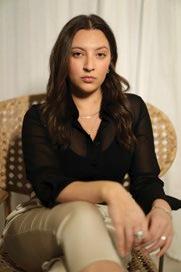 Photo by Young Habibti
Photo by Young Habibti



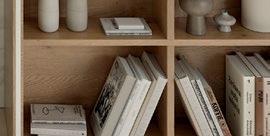

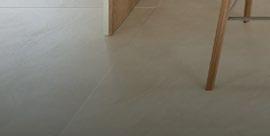
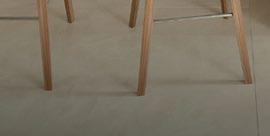
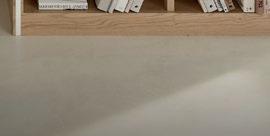


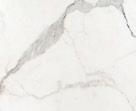
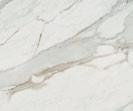

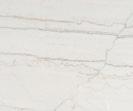
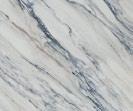
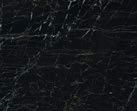
Tales of space
Pakistani artist Zahra Asim’s solo show, ‘Through the Looking Glass’ at Dastaangoi Dubai’s inaugural exhibition, pays homage to her childhood memories
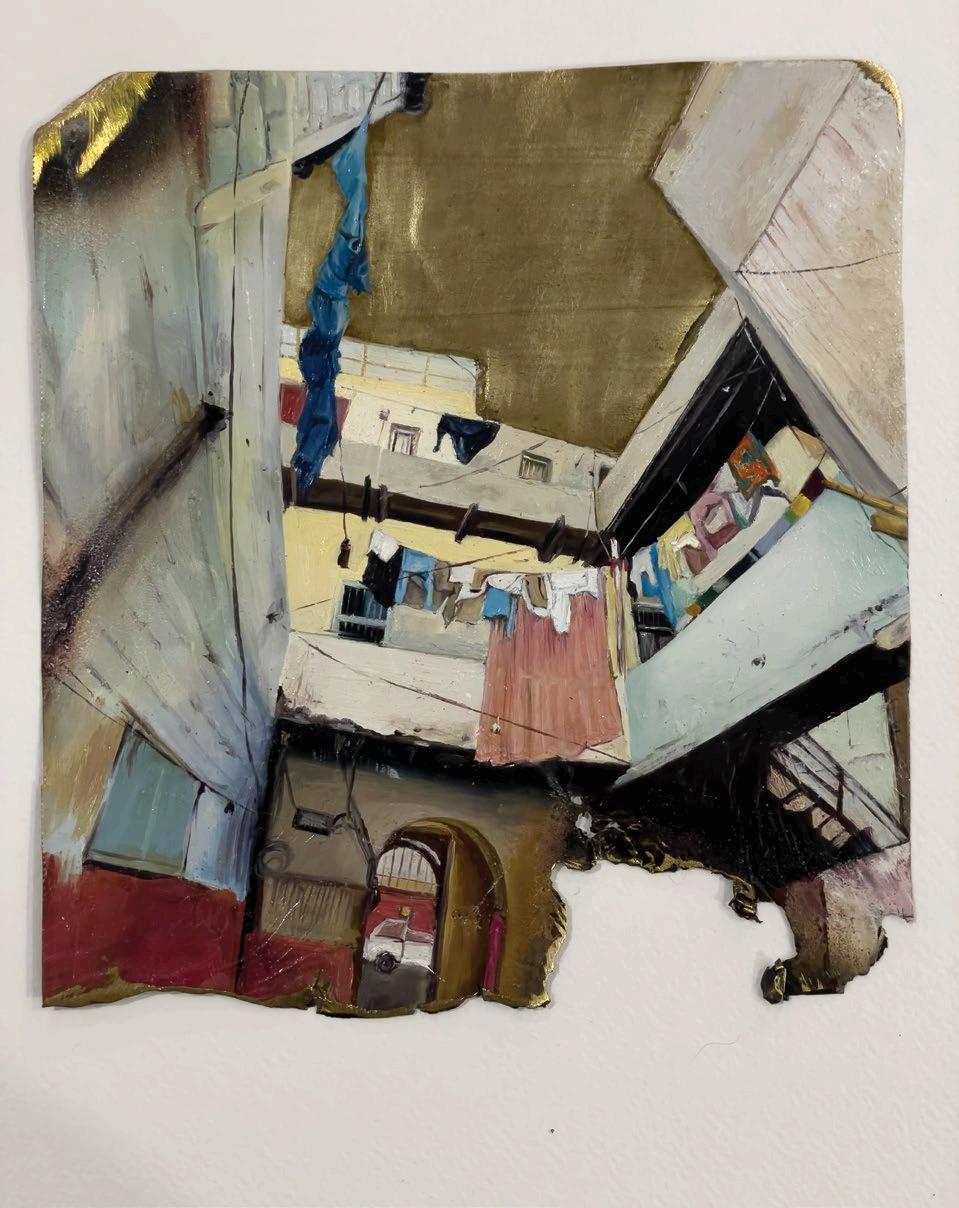 WORDS BY AISHA ZAMAN
WORDS BY AISHA ZAMAN
Since its inception, Dastaangoi Gallery – a contemporary art space based in Islamabad, Pakistan – has brought together a curated selection of diverse artworks by emerging talents from the Global South. With the opening of its second gallery space in Dubai, coinciding with this year’s edition of Art Dubai, the aim is to forge dialogue with the rest of the world and expand its talent and collector base to include the whole of MENASA.
Lahore-based visual artist Zahra Asim’s realist paintings are a narrative of congested spaces, characteristic of the narrow alleys and crowded neighbourhoods of Old Lahore where she spent most of her childhood. Light, space and intricate residential formations are all elements that come to play in her work. The artist’s reference to encapsulate the interiors within the bustling old town becomes a medium to unlock personal memories.

“In these fleeting times everyone is looking for connections to home, to attain a sense of belonging and a channel for their memories,” explains Amad Mian, co-founder of Dastaangoi Gallery. “We chose Zahra for the opening exhibit, as her thought-provoking work and inspiring story transcends cultures and builds upon nostalgia that many resonate with.” Hailing from a humble background and raised by a single mother who nurtured her passion into a successful art career, Asim’s love for art began during her childhood,
when she would accompany her mother to the region’s most prestigious art college, the National College of Arts (NCA) in Lahore. Being a child of a single working-class parent meant she was frequently on her own, which eventually led her to express her experiences through art. “I felt a strong sense of belonging and [a] desire to be part of the fraternity at NCA,” she explains. After graduating with a degree in Fine Art from NCA in 2014 and completing her master’s in art and design from Beaconhouse National University, Lahore in 2019, Asim painted professionally for almost nine years and has exhibited in numerous groups’ shows, both nationally and internationally.
Having been raised in the constricted lanes of the old Mozang area of Lahore, she began to develop a phobia of small and enclosed living spaces, which exists to this day. “The domestic environment was chaotic, overfilled and lacked natural light, yet at this age I have realised that – along with being surrounded by stacks of objects – I was simultaneously encircled by a vibrant community of love and support,” Asim recalls.

Her closely laid-out urban environment honed her sense of perspective. As a child, the fixation was on claustrophobia, and yet ironically, it is the very Tetris-like patterns of such residential spaces and the play of natural light that now defines her artistic expression, which is symbolised by a bare honesty that shifts between the artist’s memories and a positive nostalgic association.
The beauty of her work lies in her ability to use simplified forms through the medium of oil paints to create intricate and layered paintings, akin to manuscripts that speak a universal language. Still life, nostalgia, the past and the future: all are perfectly captured on the gleaming brass sheets Asim uses as a base for her art. “Every single piece has an intimate story that sheds light on the creation of my own emotional relationship with it,” she explains. “I have confronted spatial experiences through my creative strategies.” id
‘Through the Looking Glass’ opens on 28 February at Dastaangoi Gallery Dubai
11 THE ART ISSUE art
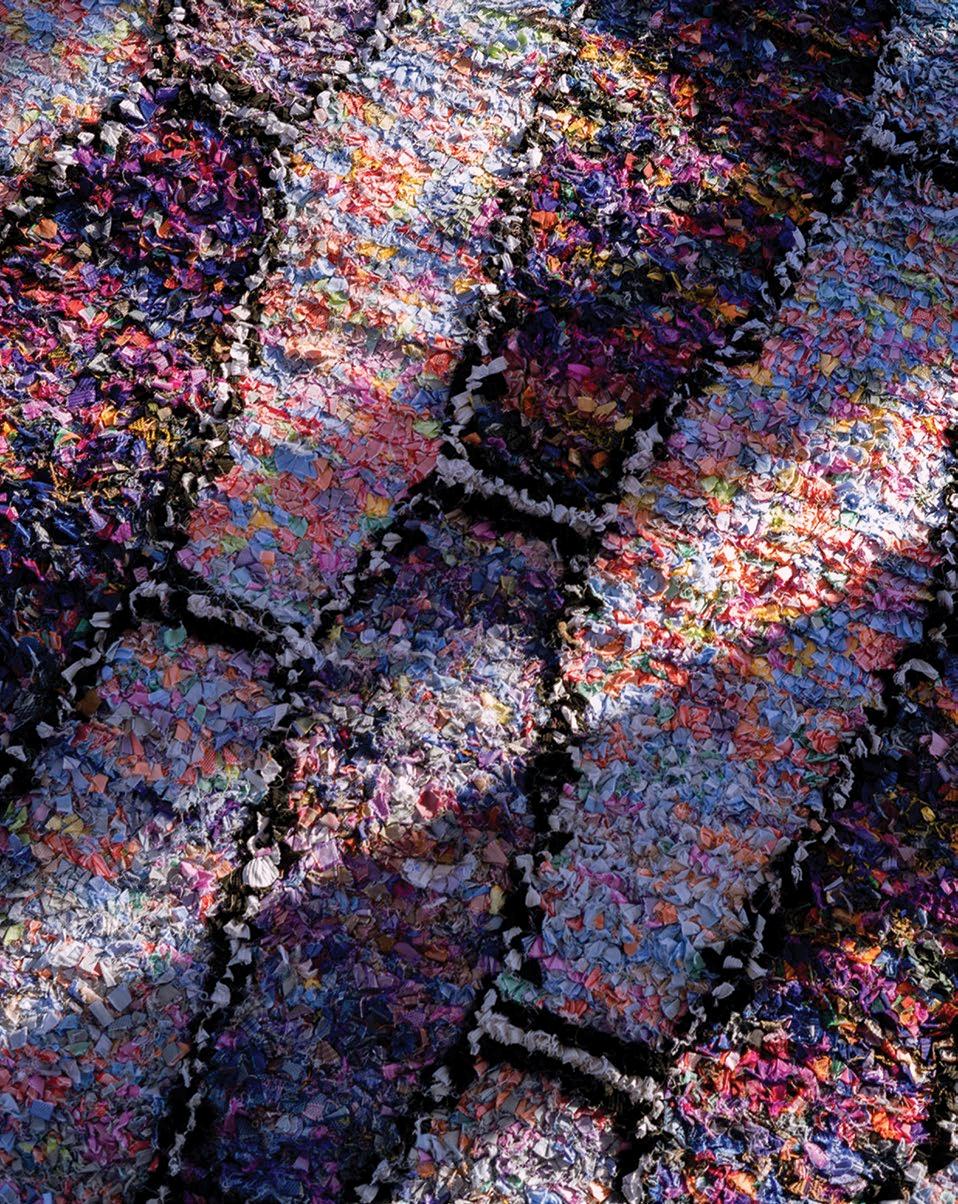
Upcycled matter
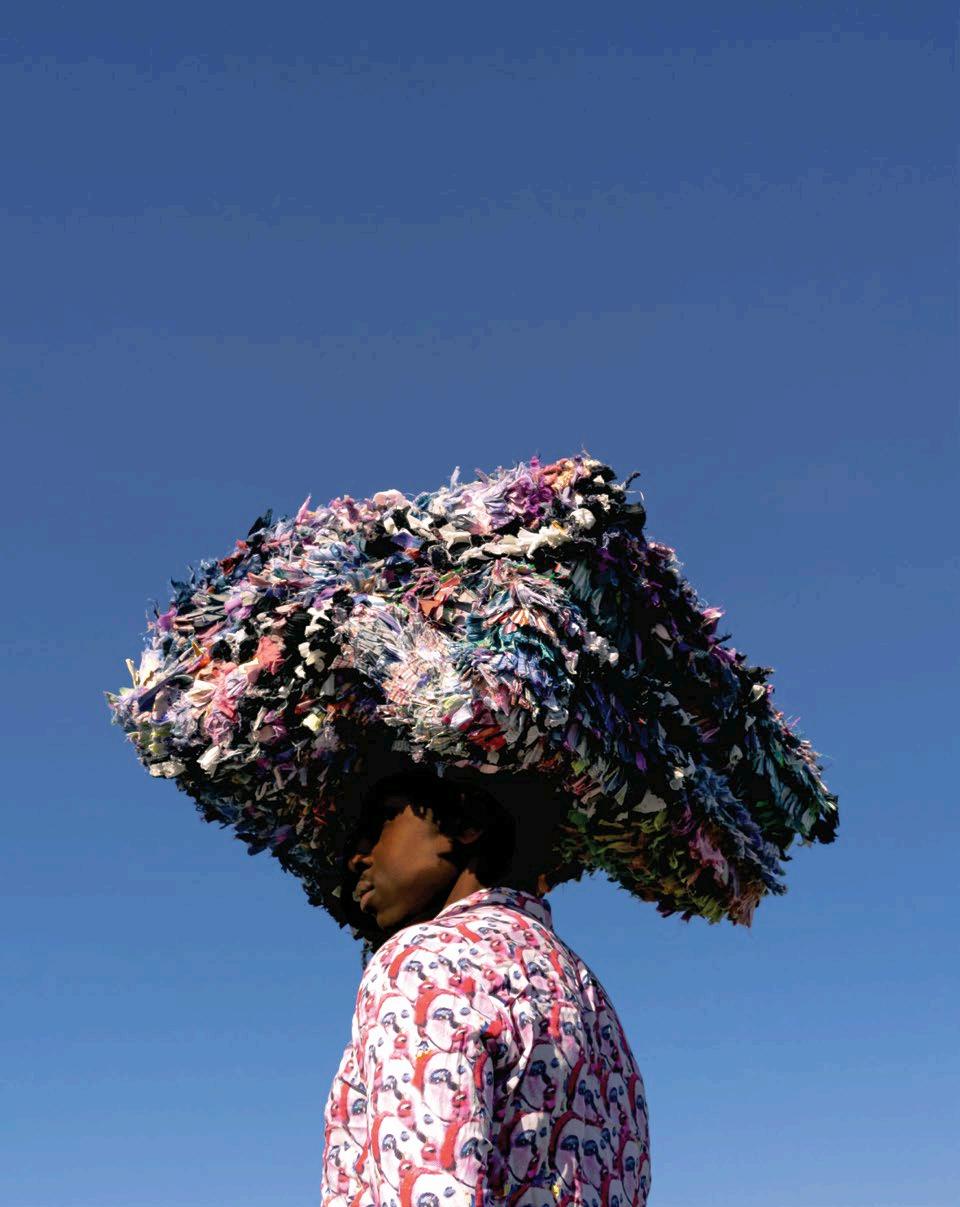
Sëbou’s latest collection of handmade rugs is inspired by the flower fields in northern Morocco and woven using Eton’s upcycled fabrics
WORDS
BY AIDAN IMANOVA

Since starting Sëbou in 2019, Omar Marhri has been adamant in ensuring that his rugs are created with sustainability in mind, using ecological wool made with zero waste, as well as cashmere. His second goal was to highlight the historic artisanship of Morocco’s Berber population, who have been expert craftspeople in the use of wool, iron, silver and clay for pottery. “I wanted to reimagine, reinvent and regenerate the artisanal craftsmanship of Moroccan rug-making,” shares Marhri, who is also the brand’s creative director.

With these values in mind, the Swedish brand’s latest limited-edition collection is woven in Morocco using upcycled by-products from fashion brand Eton’s shirt design process, using excess ‘blanket rolls’, each consisting of more than 100 colours and combinations. While these are usually later placed in storage – in Eton’s fabric archives – the collaboration with Sëbou has given them a new purpose. The idea came to Marhri through a conversation with a friend about fashion design’s ongoing waste problem, specifically leftover fabrics. They were on a plane going back from Morocco to Sweden, where Marhri lives.
“Being aware comes with responsibility, and we owe it to ourselves and the future to strive towards a more environmentally friendly lifestyle”, he adds. “[For] a design company, trends have an inherent challenge: they have their peaks, and eventually get replaced by the next trend. Our focus has
always been to do the opposite: to make oneof-a-kind, timeless pieces made from materials that are recycled and upcycled and can live for a long time.” Leftover fabric is a common result of textile production, prompting Sëbou to purchase it in bulk from Morocco, Ghana and Sweden. “After I came home to Stockholm from my trip, I contacted my good friend Sebastian Dollinger, who was at the time the creative director at Eton, which is one of Sweden’s oldest shirt brands, with an incredible history. I asked if they had any leftover fabrics that I could reuse to make beautiful rugs. He thought it was an incredible idea to give life to something that is just lying there, and he told me that they have a lot of leftover fabrics in their factories in Italy and Switzerland that we can use,” Marhri recounts.
Sëbou is an amalgamation of its founder’s home and heritage: weaving the subtlety of Scandinavian design with the vibrancy of Moroccan culture, rich in its craft heritage.
“For thousands of years, the Moroccan Amazigh have been knitting rugs in the same way, with the same historical designs and materials,” Marhri says. “My approach to designs is to try to challenge what has been, mixing old with new, Swedish minimalism and Moroccan craftsmanship, to make unique sustainable rugs.”
The limited-edition collection is also an ode to his childhood memories in Morocco, and inspired by the flower fields by the Sebou River – located in the north of the country. It was the first time he had seen the river in springtime as an adult, having spent summers there only as a child. “When I went down in the spring for the first time, I saw that the fields had bloomed. It brought me such peace and joy to observe, and I really wanted to share this through my art,” he says.
The collection’s vibrant colours have been knotted by hand – a discipline that takes a great deal of expertise and skill that has been passed on for generations.
“Craftsmanship is an art in danger of extinction. As everything becomes more efficiently produced and cheaper, people no longer value craftsmanship and quality as they once did,” Marhri says. “I am truly dedicated to keeping these traditions alive using new, innovative ways, so that craft can also appeal to the new generation.” id
15 THE ART ISSUE art
A global stage
INTERVIEW BY AIDAN IMANOVA
How is Art Dubai responding to what is going on in the art world today, and in what way is it setting its own agenda? PV: We believe art fairs must react to the needs of their local communities, and this philosophy helps us set a unique agenda that brings all the key players across our region together. We see ourselves as a convener of great minds and an entry point to our vibrant cultural ecosystem. A key element of this is showing top-quality art and artists that you simply will not see at any other art fair – and showcasing them first.
How has the fair been involved in getting better representation for artists across the Global South as a whole, and do you think there is a greater appreciation for works from this part of the world? PV: Our role has always been to amplify the voice and heighten the vision of all up-and-coming cultural artists from the Global South, who have been historically underrepresented in the mainstream, largely Western-focused art world. It is something we have been doing since our first fair in 2007, and today there is so much more

16 art
As art across the Global South begins garnering more international attention, identity speaks to Pablo de Val, artistic director at Art Dubai, and Vipash Purochanot, the 2023 curator of Bawwaba, about the fair’s efforts in keeping these artists and galleries at the forefront
Right: Sacred Geometry, Saad Qureshi (2022), woven paper. Courtesy Aicon Gallery. Next page: Signs of Time (Cracks), Dickens Otieno (2022), mixed media sculpture, aluminium cans on galvanised coffee tray wire mesh
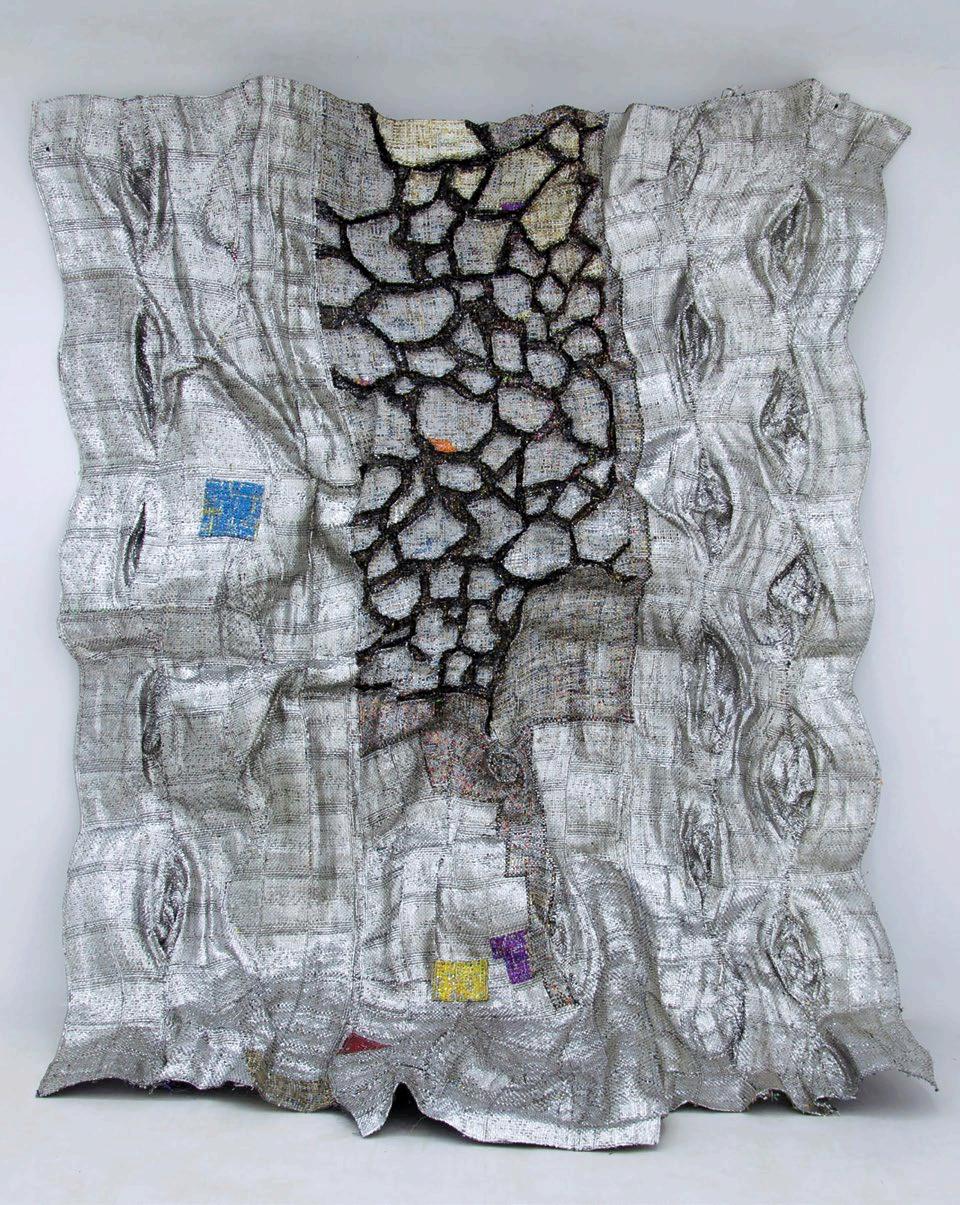
appreciation for works from the areas of the world we have always championed. Interest in the artistic communities from the Global South grows year on year, and Dubai now has a thriving art scene that is internationally recognised as a centre of creative talent; one that incubates and supports and gives voice to that talent. Our event gets more ambitious each year, and in 2023 more than 130 galleries from all around the world will be at the show.
What is the significance of the theme of this year’s Bawwaba? VP: Bawwaba, which means gateway in Arabic, is dedicated to presenting new work by galleries and artists from the Global South. It offers visitors an analysis of current artistic developments through ambitious solo presentations from 11 artists who [this year] originate from Brazil, India, Indonesia, Iran, Kenya, Morocco, Nepal, the Philippines and the UAE. As the curator of the section, I have given it the title ‘Against Disappearance’, to highlight the artists’ shared endeavour to make visible the level of skill involved in creating works of art when such qualities of workmanship and artistry are disappearing from all aspects of life in the 21st century.
The theme is the very antithesis of the modern world, characterised by instant technology,
whether it’s smartphones, tablets or computers. The contemporary world can be fast-paced and shallow, and attention spans are short. The artists showing in Bawwaba have responded to this through the art of lingering. They have turned to vigorous tasks that expand their attention spans through obsessive detail. In contrast to the act of swiping a finger and scrolling a screen, these artists work with their hands, creating works of art to hold and behold. Their works also underline where they come from, as well as the world [as a whole].
Can you give examples of how some of the artists in Bawwaba carry these processes in their work? VP: Nepali artist Youdhisthir Maharjan [for example] works with paper. He finds books in thrift stores, then meticulously cuts out individual alphabets from them, weaves strips from their pages and assembles them into works of art. Similarly, Gregory Halili, a Filipino artist, works with translucent capiz shells, a traditional material from the archipelago. He has developed a technique that allows him to paint at a miniature scale on a shell’s delicate surface.

In contrast to Halili, who uses precious materials, Dickens Otieno creates beautiful tapestries from everyday materials. The Kenyan
artist weaves shredded aluminium cans into artworks using a technique normally meant for natural materials such as papyrus, raffia or palm. The colours and patterns of his works are inspired by his memory of his mother’s tailoring workshop in the shifting environment of Nairobi. By using discarded materials, Otieno also interrogates sustainability through his art. id
The 16th edition of Art Dubai is taking place from 1 to 5 March 2023 at Madinat Jumeirah
18 art
Between the Lines , Youdhisthir Maharjan (2022), hand embroidered book strips on reclaimed deacidified book pages
Choose from our extensive range of authentic Thesiger photographs.

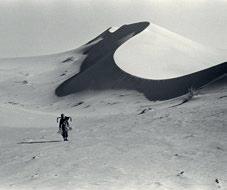


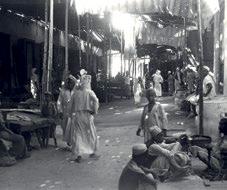


PERFECT DECORATIONS FOR HOTELS, OFFICES
AND HOMES.
Available exclusively from The Arabian Gallery in any size - framed or unframed
Rituals of movement
OMA designs the scenography for the world’s first Islamic Arts Biennale in Jeddah, depicting an enlightening survey of Islamic cultural traditions and artistic practices
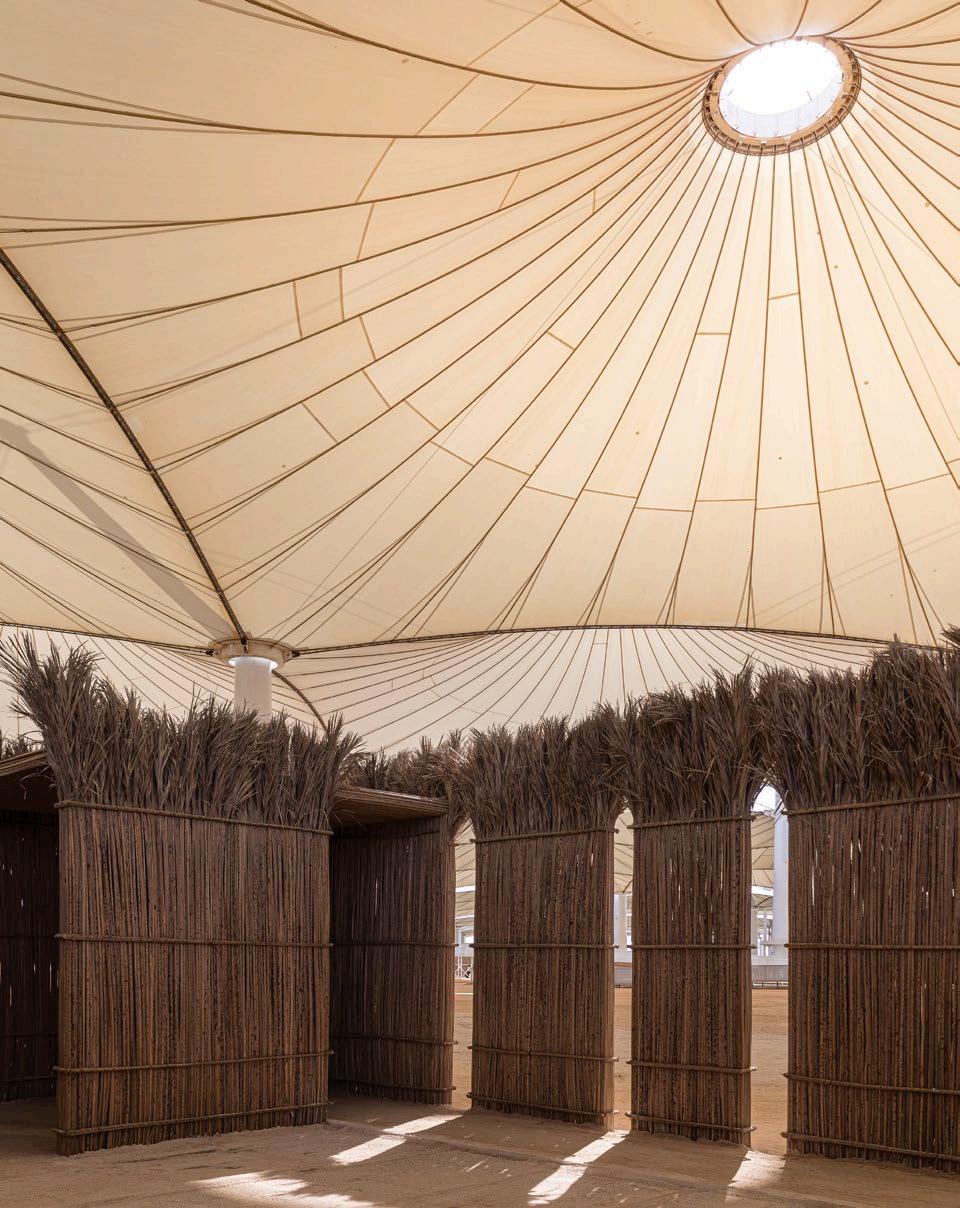 WORDS BY AISHA ZAMAN
Photography by Laurian Ghinitoiu
WORDS BY AISHA ZAMAN
Photography by Laurian Ghinitoiu
Previous page: ‘Anywhere can be a place of worship’, Syn Architects (Sara Alissa and Nojoud Alsudairi), ©Diriyah Biennale Foundation.
page:
door,
Dutch architecture firm OMA (Office of Metropolitan Architecture) is no stranger to the Middle East, with numerous high-profile projects already under its belt – such as the master plan for Waterfront City in Dubai, the Airport City master plan in Doha, Concrete at Alserkal Avenue, and the Qatar National Library in Doha. Its latest endeavour is a temporary installation for the world’s first Islamic Art Biennale in Jeddah, Saudi Arabia.
The Diriyah Biennale Foundation’s ambitious project marks OMA’s first built work in the Gulf country; one that is unprecedented in its undertaking, since no other global event has previously presented a grouping of Islamic-inspired arts in this manner, spanning architecture, design, visual arts and historic objects.
These are being displayed over 120,000 square metres of exhibition spaces, taking over Jeddah’s Western Hajj Terminal, which was designed by Skidmore, Owings & Merrill (SOM) – the winner of the Aga Khan Award in 1983. The Biennale is set within the city of Jeddah, which for centuries has represented a convergence point for cultural exchange, and within a venue that acts as a port of entry for millions of pilgrims on their spiritual journey.
“The Biennale is an opportunity to discover and learn about Islamic culture. More than 200 ancient objects are on display, some of which have never been seen by the larger public,” says Iyad Alsaka, partner at OMA. “There are artworks by contemporary artists from Saudi Arabia and other countries in the Middle East and northern Africa, [as well as] countries like the UK and South Africa, giving a
new dimension to the timeless rituals of Islam,” he adds. The Western Hajj Terminal exists at the axis of history and ingenuity itself, being a pioneering project at the time of its opening. OMA builds upon this architectural contribution and reimagines it as a cultural venue, drawing upon the existing canopy design and elevating it with a modern, dynamic twist.
“Our scenography design aims to create a space that complements the cable-stayed, fabric-roof of the iconic Hajj Terminal – a pivotal piece of modern architecture known to Muslims around the world – literally reinventing it as an umbrella for Islamic Arts,” explains Kaveh Dabiri, an associate at OMA.
Under the curatorial theme ‘Awwal Bait’, which translates to ‘First House’, the Biennale explores how Islam’s most sacred sites – Makkah (the destination of the annual pilgrimage) and Madinah (the place where Prophet Mohamed is buried) – has inspired Muslims around

21 THE ART ISSUE architecture
This
Kabah
made by Shaikh Mahmoud Yousuf Badr for King Abdulaziz bin Abdulrahman Al Saud, ©Diriyah Biennale Foundation
Photography by Marco Cappelletti
the world to create a sense of belonging, bringing unity in a plural world. OMA’s design divides the exhibition space into two complementary areas, with indoor galleries and outdoor installations creating a dialogue between scared sites and rituals.
The first scenography is a cleverly devised trajectory through a sequence of newly built galleries, inspired by the concept of the ‘Qiblah’ (the direction Muslims face when they pray). The exhibition manifests gradually in a journey from darkness to light, starting in a dimly lit room filled with 17th-century astrolabes – used to calculate the direction of the ‘Qiblah’ – and concluding in a bright space hosting an installation which incorporates the First Saudi Door of the ‘Ka`bah’ in Makkah, installed during the reign of King Abdul Aziz. Through a linear sequence of four galleries, the visitor explores key rituals in the Islamic faith, and what it means to be Muslim today.
The second area is outdoors, under the terminal’s open canopy where OMA has created a desert-like landscape that pays homage to the journey of ‘Hijrah’ – Prophet Mohamed’s journey from Makkah to Madinah. The landscape consists of slopes and slanted walls of varying heights, arranged in relation to the geometry of the existing structure, creating a sense of exploration throughout one’s visit. “The spaces we created are meant to offer a calming and meditative experience, with only objects or works of art in the spotlight,” Dabiri explains. Additionally, two freestanding pavilions act as reference points in the open landscape, exhibiting rare artefacts from Makkah and Madinah. In contrast to the sandy atmosphere outside, the installations in the


two pavilions are embedded with a bright, soft diaphanous screen that wraps the perimeter of the walls. The effect is meditative and mystical. “This is an historic moment not just for Saudi Arabia but for the entire Muslim world,” says Sumayya Vally, artistic director of the Biennale and principal of Johannesburg-based architectural studio Counterspace. “At its essence, this Biennale is about giving contemporary objects a home by giving them a lineage, and giving historic objects a home by giving them a future.”
“I worked tirelessly with OMA to direct this vision,” she adds. “They have spectacularly created the exact journey I had envisioned, of the visitor moving across scales and atmospheres from darkness to light – reminding us of the presence of God and the constancy of our rituals in building our spiritual home at various phases and times of our lives.” id
The Islamic Arts Biennale will run until 23 April 2023 at the Western Hajj Terminal in Jeddah, Saudi Arabia
architecture
Photography by Alanood A. AlSudairi
Photography by Marco Cappelletti


23 THE ART ISSUE architecture
Photography by Marco Cappelletti
Photography by Marco Cappelletti
Industrial spirit
51-1 Arquitectos has refurbished a former ice factory in Kalba into a cultural centre and artist residences for Sharjah Art Foundation
 WORDS BY AIDAN IMANOVA
WORDS BY AIDAN IMANOVA
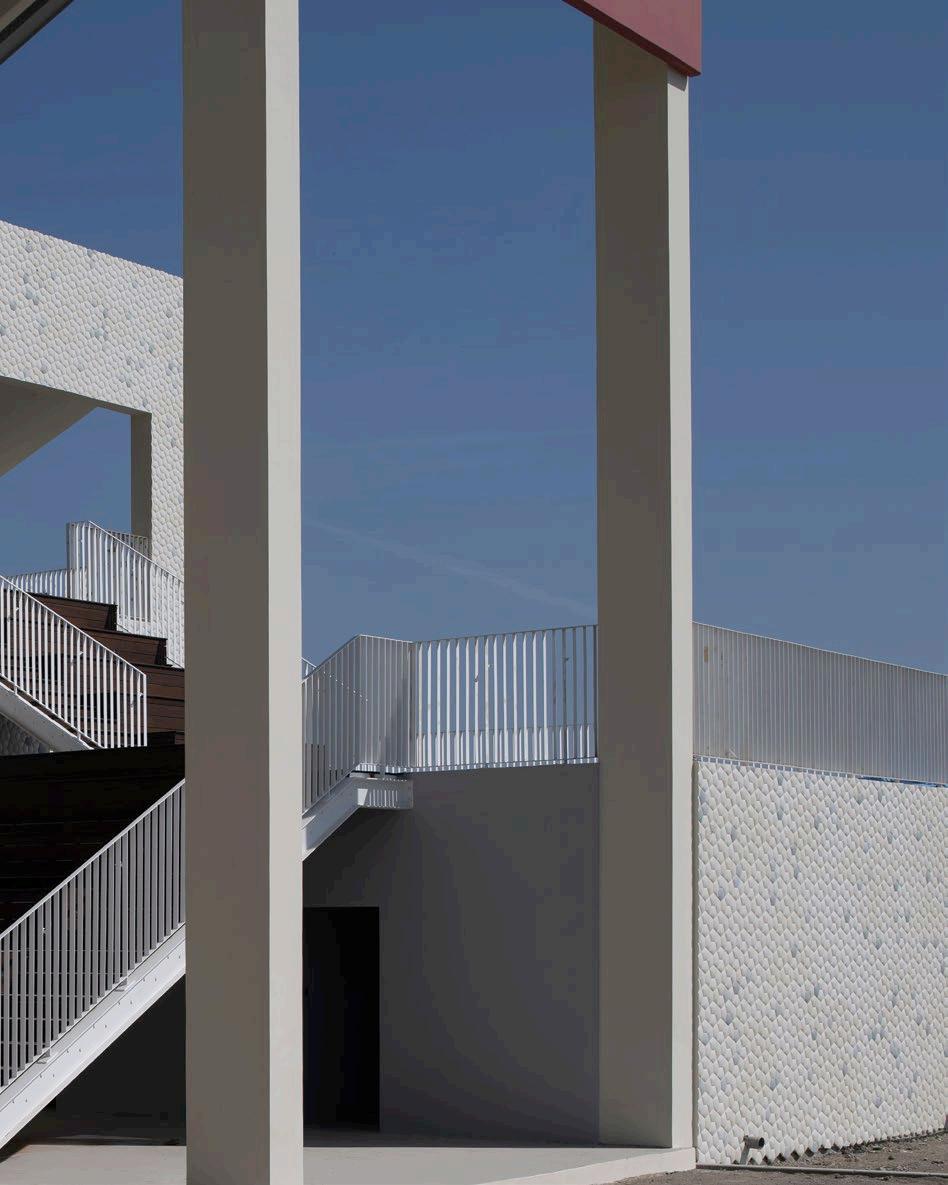 Photography by Danko Stjepanovic
Photography by Danko Stjepanovic
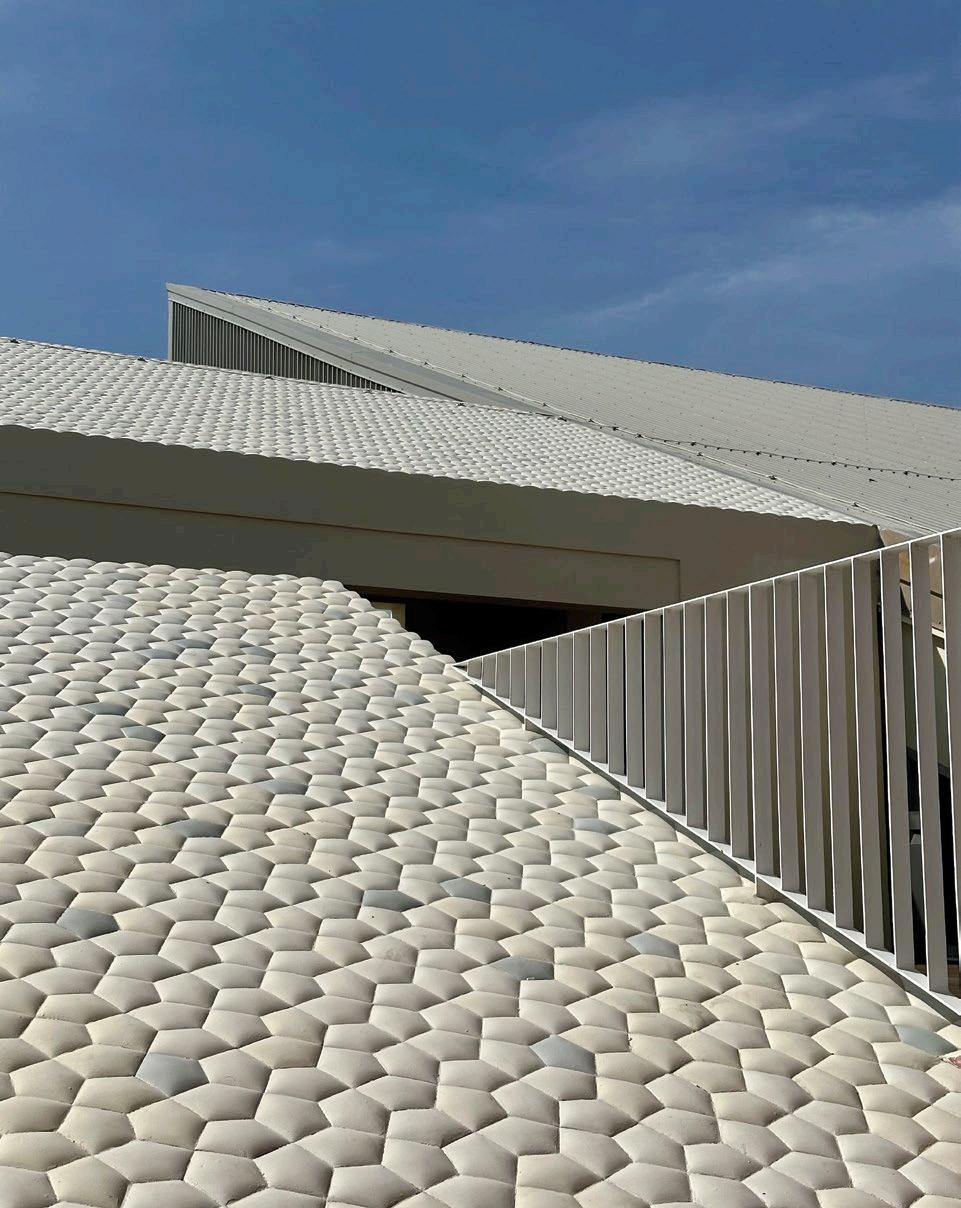
Located next to the Kalba Creek and the Al Qurm mangrove swamp in Sharjah’s east coast, amidst the rugged Hajar Mountains and the Gulf of Oman, is the Kalba Ice Factory: a former 1970s fish feed mill that was used by local fishermen to store ice for transporting freshly caught fish to Dubai. The derelict building –with a distinctive saw-tooth shaped roof – was acquired by the Sharjah Art Foundation (SAF) in 2015 and has since served as a site for its various interventions. Its recent renovation sees the abandoned 20,000-square metre building transformed into a cultural centre for Kalba by Lima-based 51-1 Arquitectos.
“By preserving the industrial rawness of the factory space and protecting the unique ecosystem of the surrounding landscape, this project extends the Foundation’s critical work [of] preserving sites of historic, cultural and environmental significance for future generations through adaptive reuse, and engaging communities across the emirate with contemporary arts programming,” says Hoor Al Qasimi, director of Sharjah Art Foundation.
Since its opening – which coincided with the 15th edition of the Sharjah Biennale, under the theme ‘Thinking Historically In The Present’ (open until 11 June 2023) – the building has been used to feature the works of artists including Rebecca Belmore, Ibrahim Mahama, Pak Khawateen Painting Club, Doris Salcedo, Abdulrahim Salem, Kahurangiariki Smith, Inuuteq Storch and Nari Ward.
The architects behind the delicate renovation maintained a minimal level of intervention to the factory space – which makes up the main component of the cultural centre – thus allowing for large-scale temporary art installations to be set in its naves. They also maintained the building’s spatial qualities as an industrial ruin, restoring the roof which was almost destroyed and expanding the existing structure with the addition of six studios and living spaces for visiting artists, as well as stands and platforms for events and viewing the surrounding landscape. The extension utilises the same profile as the factory building, with a similar almost childlike silhouette, and overlooks the nearby mangrove forest.
“Sheikha Hoor invited us to visit the site and we fell in love with the place, mainly because it felt very similar to the landscape of Peru – both are arid climates – and we loved all the remnants of the industrial site,” remembers Manuel de Rivero, partner at 51-1 Arquitectos. He insists that the industrial quality of the building was what charmed them the most, and it became their mission to preserve as much of that spirit as possible. “We also managed to utilise the roof, in order not to waste space and make sure every part of the building can be used while maximising the views,” he adds.
In front, an existing structure has been repurposed into a 200-square metre workshop space for artists, and directly behind the factory is a restaurant set on a long, shaded pathway, connecting to the creek. Inside, a large mirror runs across the space, facing the mangroves and reflecting the surrounding nature back into the interior space, so diners are connected to the natural environment, even indoors.
Separating the restaurant from the nearby road is an edible garden, featuring spaces for dining,

27 THE ART ISSUE architecture
Photography by Motaz Mawid
cooking and playing. “We usually have gardens to enjoy looking at, but here we wanted to create something you could eat from, and where you could include tables for barbeques – something for the community [to enjoy],” says de Rivero.

An elevated deck connects the parking spaces to the garden, the restaurant and the garden, where neem trees will soon line the entire route, connecting the various elements of the renovation. “There were a couple of palm trees that we thought [about] using – but SAF is very concerned with environmental issues, so they advised not to use the palms as they consume too
much water for the shade they provide, so we used neem trees as an alternative,” the architect adds. The Kalba Ice Factory is located in an extremely biodiverse area of the emirate; green turtles which would come to nest on the nearby beach inspired the honeycomb-like shape of the ceramic on its façade, mimicking the forms of the hatches used to protect the baby turtles.
“When the sun hits the tiles, you get a reflection of colours, and it will only look better when it gets dirtier,” de Rivero asserts. “That’s the whole idea of the project: it should age well. Time should finish the work.” id
28
Above: Uprooted, Doris Salcedo (2020-2022), 804 dead trees and steel
Photography by Juan Castro
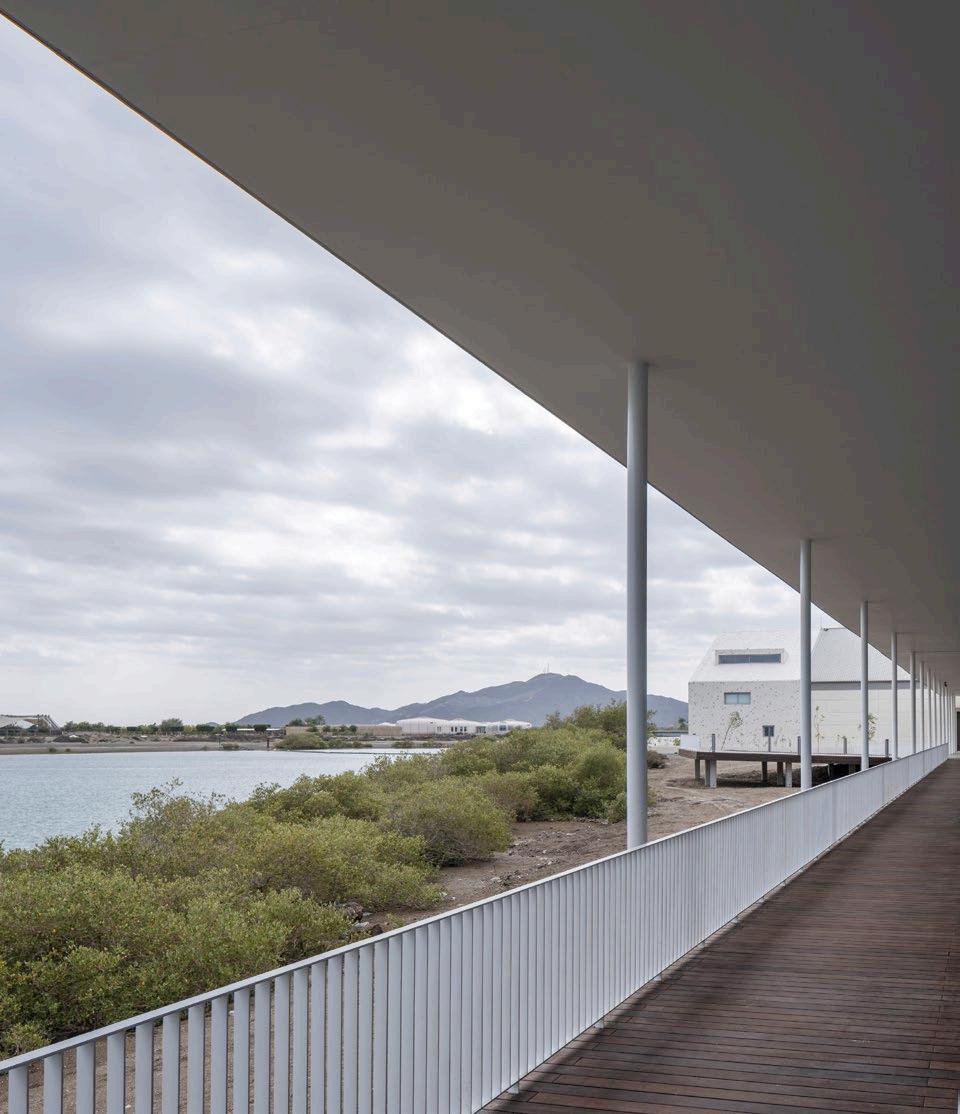
29 THE ART ISSUE
Photography by Danko Stjepanovic
The life of objects
KAMEH’s latest collaboration with the artist known as Ellie is being revealed for the first time, exclusively with identity, as a celebration of Dubai’s Art Week
INTERVIEW BY AIDAN IMANOVA
30 art
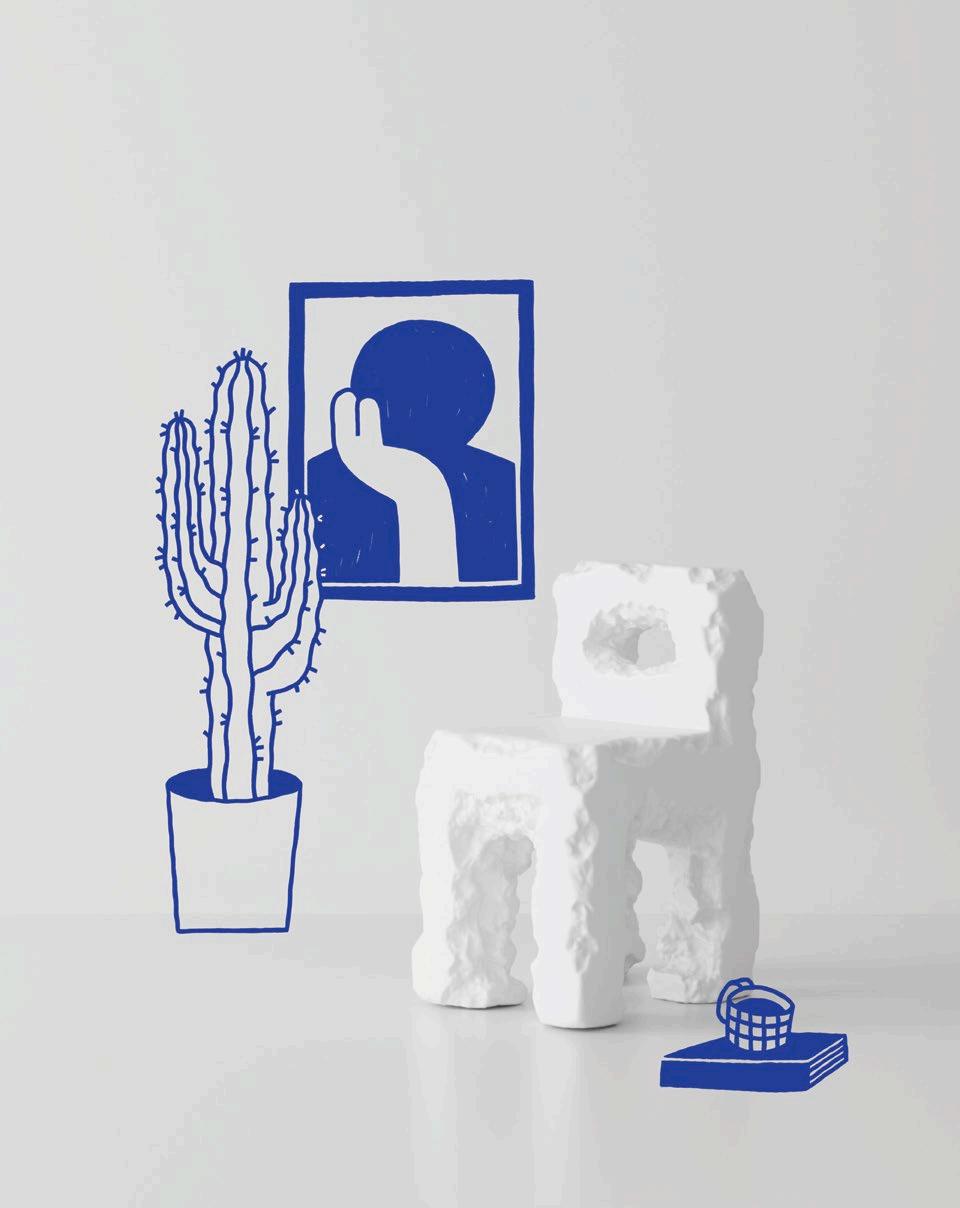
When KAMEH first launched in Dubai last year – a collectible design brand with an anonymous designer at its helm – naturally, it caused some intrigue. While only a young brand, its furniture pieces are quickly becoming recognisable for their imperfect, sculptural forms and for the masked and hooded figure behind the works. Here, we speak to KAMEH about its latest collaboration with Warsaw-based illustrator Ellie, which is bringing its design objects to life.
Can you tell us about how your collaboration with artist Ellie came about? From the day I started KAMEH, I knew that I wouldn’t display people next to the objects of design I make, as it seemed quite usual to me. While we were launching new products, I received a lot of feedback from people saying that they missed seeing life in the pictures – there were no people or plates on the table. I love challenges, so I started to think about how I could possibly show the functionality of the objects without models and the usual styling props. The only way in my head was to collaborate with an artist who could draw using the photographs of the objects.
One evening, after a long day, I was scrolling through my Instagram, and I saw Ellie’s work, which my friend had reposted. That was it. I knew
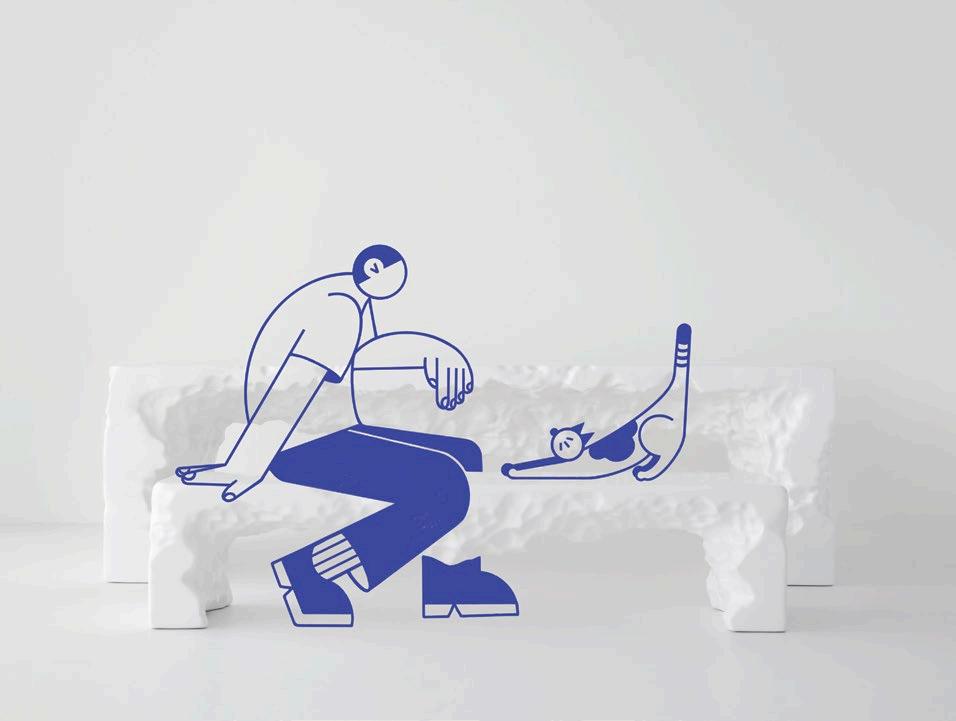
32
straight away that this was the person I wanted to collaborate with. I reached out to her and said, “I love what you do. I have this idea. I want you to bring life to my objects.” It was quite important for me to give her the freedom to do what she is best at: drawing the life in the pictures. I trusted her, and she did a brilliant job. How do your own designs for KAMEH align with the work of the artist? What I love about art is that it’s like love. It makes you feel alive. Ellie’s art is super clean, minimal, and easy on my visual senses. I wanted our work to look organic and simple. She is a great storyteller, and I love how she manages to tell stories through her drawings. My favourite feeling is being sad. I find a lot of happiness when I’m sad. Through the sadness, I created most of my pieces. With Ellie’s work, I felt she managed to bring that happiness to my world of sadness. That was the perfect alignment. How do you see the relationship between KAMEH – which focuses more on functional objects – and art? They say that art should provoke thoughts and emotions, while design has to solve problems. I wanted to create objects that will make you think and have emotions while you’re having dinner on them. I think art is functional, in one way or another. People buy art pieces and hang them in their houses. People buy sculptures or installations and use them in their houses, too. When you are listening to music at home, it also plays its function. What do these images that interplay reallife objects and imagined spaces represent to you? They represent the world we live in. In some pictures, it’s an office desk; in others, a person taking a selfie in the mirror. It’s our life, the life we
are living now.

How do you see the connection between art and design, and how does this reflect in your work with KAMEH? I believe that everything in my world is interconnected. Art, design, architecture, fashion and music should not only coexist, but also collaborate. When I started KAMEH, it was crucial to ensure that the product looked good in pictures, as we didn’t have a physical space in Dubai for people to see it. This is how I found photographer Natelee Cocks, who helped me showcase the products in the right way. During our first photoshoot, she introduced me to an incredibly talented artist and candlemaker from South Africa. For our first video shoot, I listened to thousands of piano tracks until I discovered Jonas Kvarnström, whose music I used as a soundtrack. Ellie was brought on board to show the functionality of our pieces, and she brought the pictures to life. To me, all of these collaborators are artists as they make people feel and express themselves creatively.

What does this project say about KAMEH’s approach to collaboration between different creative fields? Art can mean different things to different people, and that’s the beauty of it. To me, it’s about connecting with talented individuals from various creative industries to create something meaningful. This collaboration demonstrates KAMEH’s desire and need to work with people from different fields. How does KAMEH plan on working and collaborating with young artists in the future? I can’t reveal all our secrets – but collaborating with young artists is in KAMEH’s DNA. We aim to provide a platform for young artists to express themselves creatively and showcase their talents. id

art
Art through the ages
identity speaks to eminent art collector Abdul Rahman Al Zayani in the lead-up to the live auction of his pioneering art collection this spring at Sotheby’s
 WORDS BY AISHA ZAMAN
Left: Untitled (The Drinker), Fouad Kamel Next page: Disembodied 5, Hayv Kahraman (2012)
WORDS BY AISHA ZAMAN
Left: Untitled (The Drinker), Fouad Kamel Next page: Disembodied 5, Hayv Kahraman (2012)
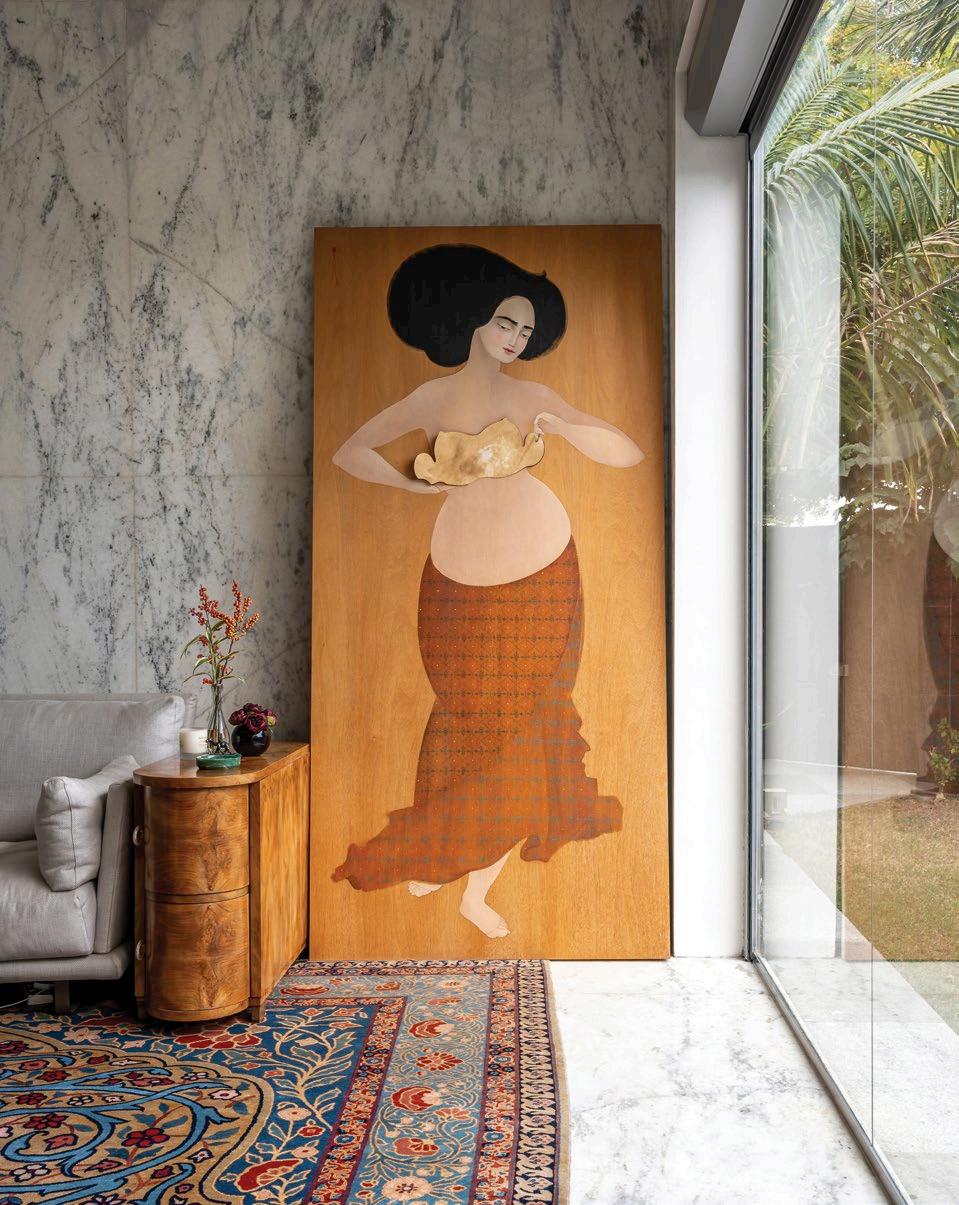
Ibelieve an art collection should evolve, engage and change hands. As I open the doors to my painstakingly curated art assemblage, I am equal parts excited for their journey into new homes, to be rediscovered and appreciated, as much as I am for the next phase in my story as a collector and patron,” begins Abdul Rahman Al Zayani.
The art collector’s fervour for art and design has led him to recently establish a luxury advisory service named A2Z, which serves private clients in New York, London and the Middle East who
are looking to expand their jewellery and art collections. Al Zayani believes in the full circle journey of art – travelling from artists to various collectors. “It’s about engagement and spreading beauty,” he adds. The Al Zayani collection has been lovingly amassed over two decades as a collective family effort. “Showcasing works from the early part of Al Zayani’s distinguished collecting career, the upcoming Sotheby’s auction outlines the journey of a collector who started very young, with a clear vision and bold taste, and believed in works from across the breadth of the Middle East,” adds Ashkan Baghestani, Sotheby’s contemporary art specialist.
This sale marks an unprecedented opportunity for art enthusiasts to acquire rare and important works from regional artistic masters such as Abdel Hadi El-Gazzar, Hassan Hajjaj, Fahrelnissa Zeid, Hatem El Mekki, Mahmoud Moussa, Mohamed Melehi, Farid Belkahia, Behjat Sadr and Taner Ceylan. Al Zayani fondly recalls his first art purchase at the age of eleven, when he accompanied

art
“
36
Below: Untitled, henna on vellum laid on panel, Farid Belkahia (1981)
his father – an avid art collector himself – to the artist’s studio. “To this day I remember the excitement of acquiring my very own piece of art and how my monthly allowance was deducted over months to bear the cost,” he remembers.

As a young adult, Al Zayani was interested in the works of the forerunners of the region such as Mahmoud Saïd, Fouad Kamel, Gazbia Sirry and Ayman Baalbaki, alongside some of the more contemporary, experimental and vibrant artists such as Hassan Hajjaj – all of whose works currently adorn the walls of his fascinating home in Bahrain.
“My family’s collection of the modern masters inspired me to spend a lot of time in museums, galleries and at auction houses,” the collector elaborates. This eventually led him to befriend art advisors such as Ashkan Baghestani and Mai Eldib, whose influence has been monumental in honing his perception, growing his collection and shifting his focus to gather from a wider spectrum of regional and international art.
Building a collection that spans generations is an artistic process itself. A man with a fervent drive, Al Zayani describes Mahmoud Saïd, an artist who symbolises the modern Egyptian art movement during a time of intellectual renaissance in the country, as one of his favourites. He states: “I find it fascinating that although he was born into an aristocratic Alexandrian family and trained in law, according to his family’s wishes, he eventually pursued his love of painting and became a successful artist.” A few of his works will be presented in this sale, including a rare and arresting self-portrait from 1950.
art
37 THE ART ISSUE
The collector has also decided to part with one of his most prized acquisitions, The Garden (1959) by Gazbia Sirry, an artist whose work deeply resonates with his childhood. Sirry – a celebrated female Egyptian artist – is known for depicting the nuanced human condition and denouncing inequalities in her home country.

“The world of Middle Eastern art has rapidly transformed in the past ten years and I am proud to witness and be a part of that evolution, living in a region that is now becoming one of the cultural hubs of the world,” he says. The establishment of new museums, such as the Mathaf:
Arab Museum of Modern Art in Doha, alongside more established institutions, as well as the rise of regional artists being exhibited internationally – such as the likes of Fahrelnissa Zeid at the Tate Modern – all signal the Middle East’s era of cultural expansion. Al Zayani concludes: “There has been a wealth of academic research and interest that has accompanied this rise in interest, and I hope that my collection plays an active role in the region’s creative discourse.”
The Al Zayani Collection (over 80 works by Middle Eastern artists) will be auctioned at Sotheby’s London on 25 April 2023. id
Above: Untitled, Behjat Sadr.
Next page: Al-Mulatham, Ayman Baalbaki (2013)
art 38
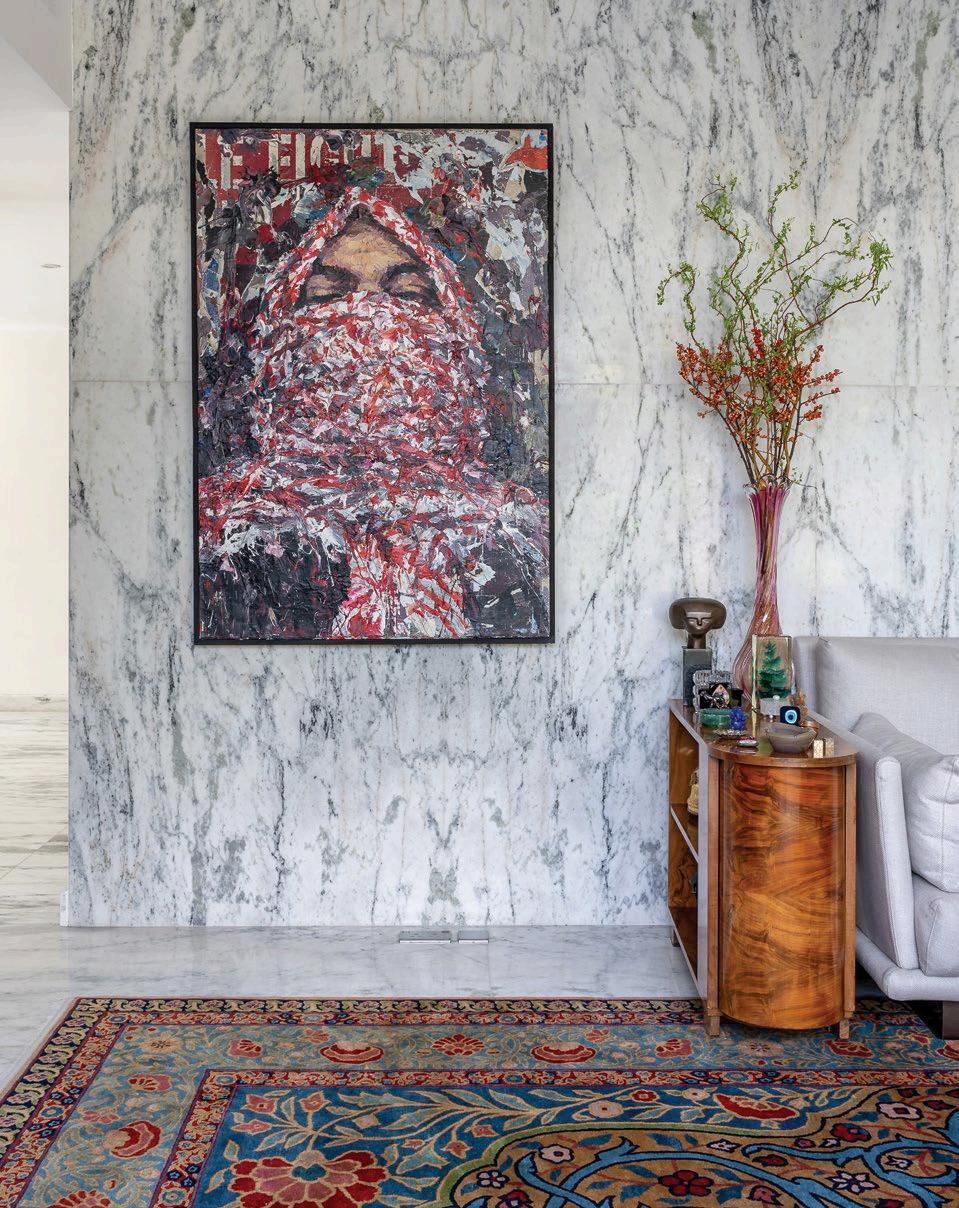
Surface level
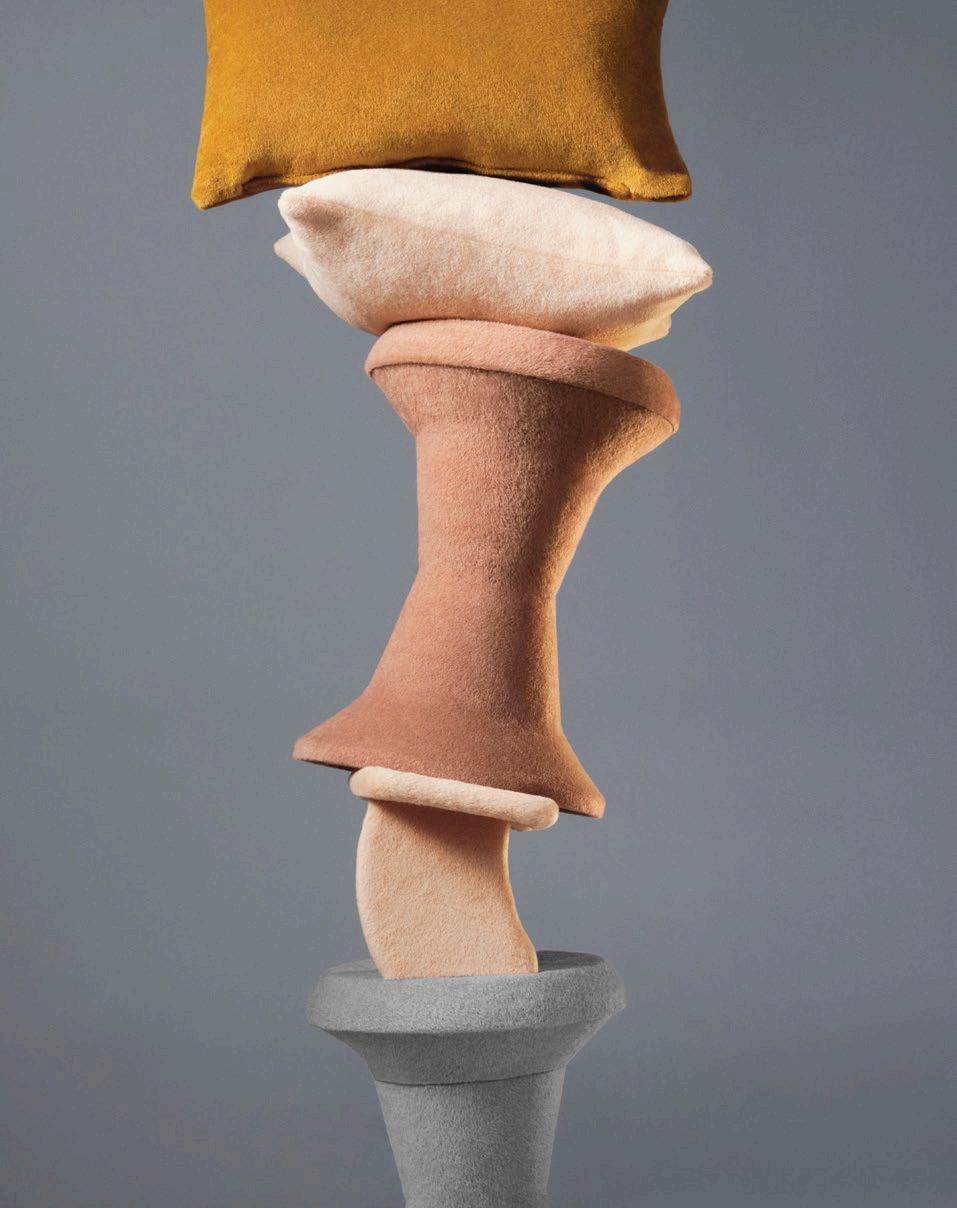
Comprising colours, patterns and textures, choosing the right surface can make any space come to life. Here we have selected wallpaper designs and textiles that are sure to be a hit
Soft touch
Dedar’s Adorabile Alpaca has been sourced in Peru and spun in Italy, making this soft velour both smooth and luminous. Using the finest baby Alpaca yarns, the fabric is woven on a special shuttle loom and delicately brushed to further embellish its natural beauty. The colour palette ranges from vibrant shades to mélange and natural hues. Offering a warm and soft touch, this textile is full-bodied and elegant, making it ideal for upholstering.
40
WORDS AND CURATION BY AIDAN IMANOVA
Venetian fragments
Rubelli’s 2023 collection looks to Venice for inspiration; namely all the little fragments that make the city what it is. It looks at slivers of textile collections of the past, as well as those of different materials: glass, glass, stone and stucco. The fabrics here appropriate the properties of other materials, from the reflection of glass to the lustre of different metals and stones.

41 THE ART ISSUE surfaces
Natural instinct
Wall&decò’s latest wallpaper collection presents three new mood boards, each offering a different view of reality. The Virtual Aesthetics collection is a celebration of a futuristic world: bright, optimistic and visually imposing through its saturated colour combinations, while Cocoon rejects the digital stage and embraces a life of tactility and craftsmanship. It features natural colours and textures, such as earth, sand, terracotta and straw, to create an oasis of peace. The last collection, Post Metaverse, is an explosion of the two: keeping to only the essentials. Here, grey take centre stage through an exploration of all its tones and potentialities.
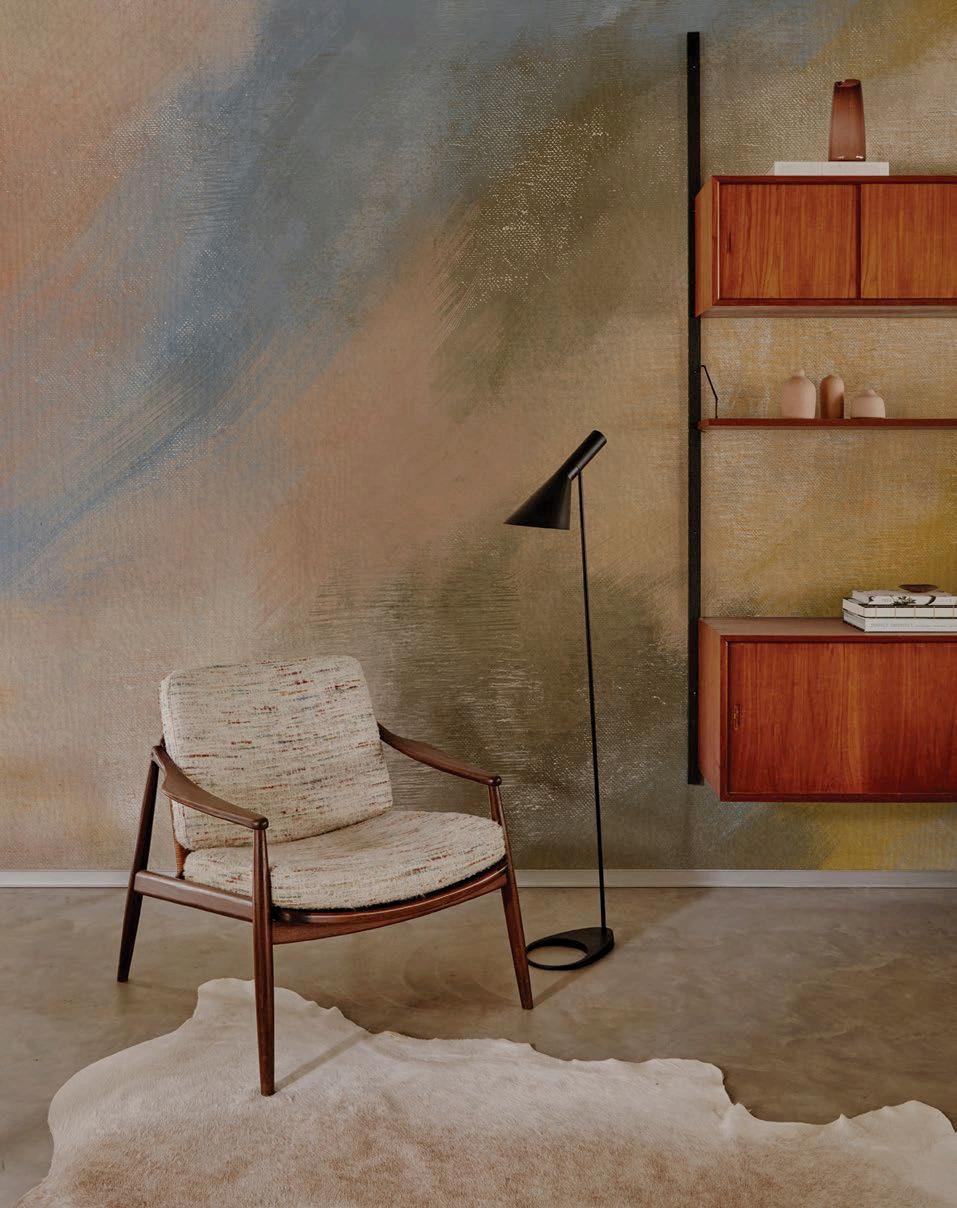
Perfect pairing
The worlds of Nordic furniture brand Artek and Maharam collide in this collection, which features Alvar Aalto’s iconic Stool 60 – designed in 1933 – and twenty Maharam textiles that include a range of colours, textures and natural materials such as cotton, leather, mohair and wool. Honey, walnut and clear lacquer finishes were chosen in combination with the textiles to highlight the breadth of Maharam’s designs – including those created by its in-house design studio, as well as well-known names such as Konstantin Grcic, Paul Smith and Studio Job.


43 THE ART ISSUE surfaces
Tranquil living
For those seeking a serene environment for their interiors, Glamora’s Komorebi wall covering collection takes its name from the Japanese term that evokes ‘sunlight filtering through trees’ and is inspired by a blend of Scandinavian and Japanese aesthetics. The biophilic nature of this collection urges a reconnection with nature, with plant-based wallpapers that are mindful both of one’s and the environment’s well-being. Inspired by the Washi technique of Japanese papermaking, the collection plays with layering natural components and lightweight weaves. The natural tones of wood, earth and the indigo blue of Boro textiles create elegant juxtapositions, while the milky, gossamer-light layer of rice starch softens and merges the colours.

design focus 44
Line drawing
A vibrant iteration of Kvadrat’s perennial classic Steelcut, the new Steelcut Beat is a durable checked upholstery coloured by Giulio Ridolfo that comes in two size checks: ‘ribbon’ and ‘grid’. It features the same innovative and intricate binding, created by Frans Dikmeijer, that resembles small pyramids or steel points. The textile is crafted using recycled yarns and draws on Ridolfo’s history of collaboration with famed fashion houses, reminiscent of the fine tailoring on trench coats. Its colourways are inspired by the picturesque Italian countryside of the designer’s childhood, with shades of deep red, violet and green. id
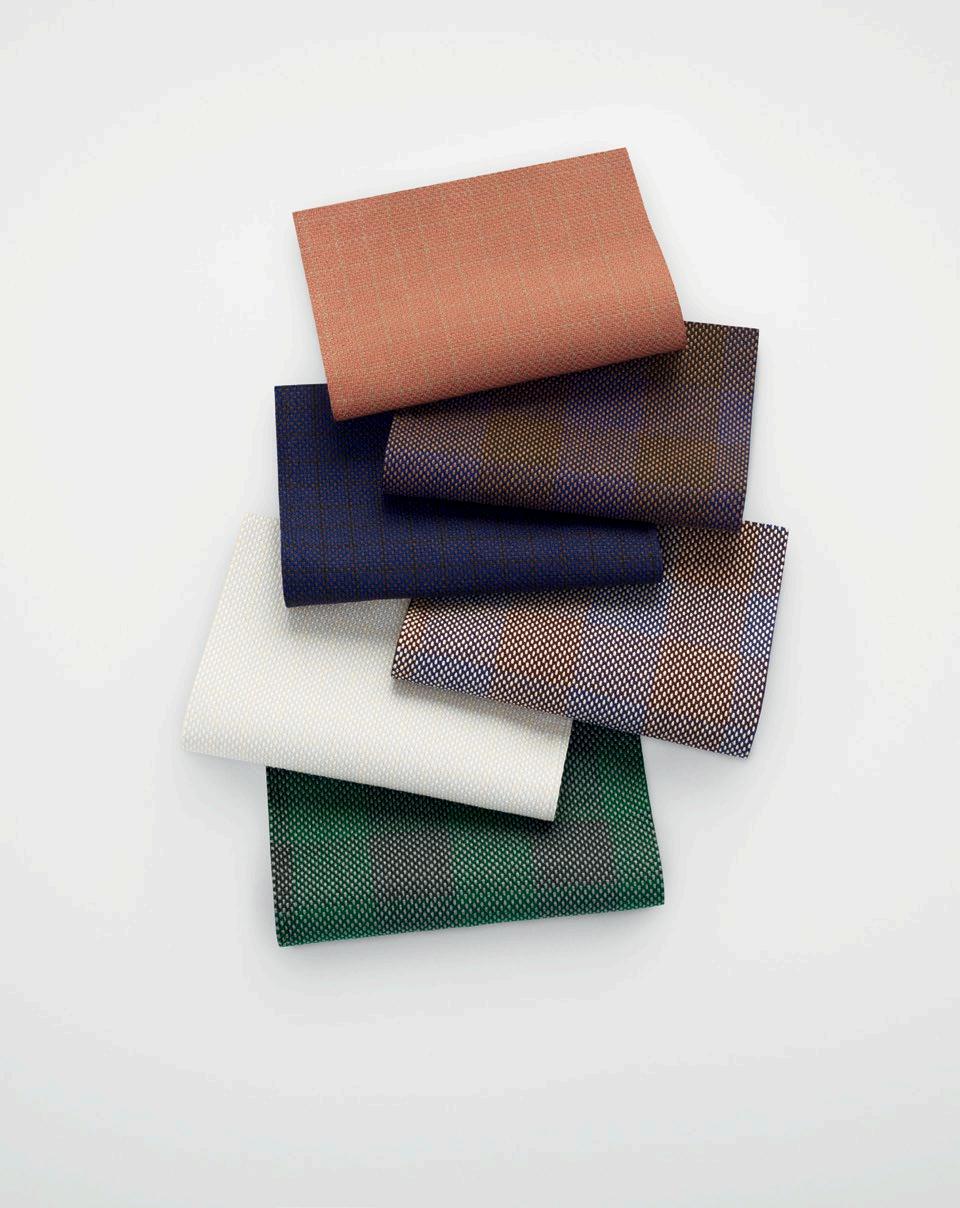
45 THE ART ISSUE
surfaces
A sense of rhythm
With the help of two top design firms, collector Anthony Youhana made his apartment a reflection of his personality, with indoor/outdoor living and entertaining as guiding principles
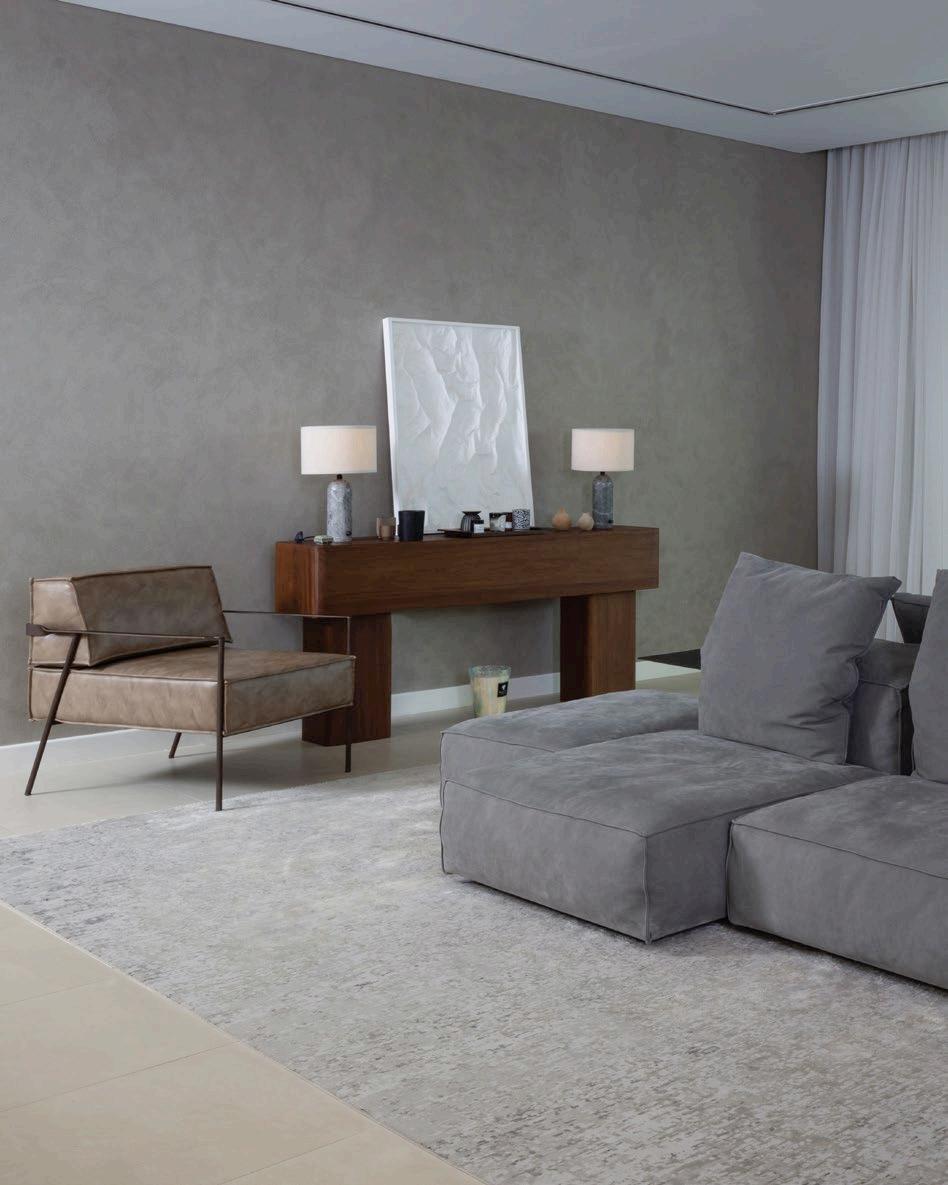 WORDS BY KARINE MONIÉ PHOTOGRAPHY BY AASIYA JAGADEESH
WORDS BY KARINE MONIÉ PHOTOGRAPHY BY AASIYA JAGADEESH
The lounge area features this Living Divani sofa as a centre piece of the room, which in the daytime is bathed in natural light and looks out to the greenery outdoors. The lamps are from Gubi while the side tables and console were custom-made for the home
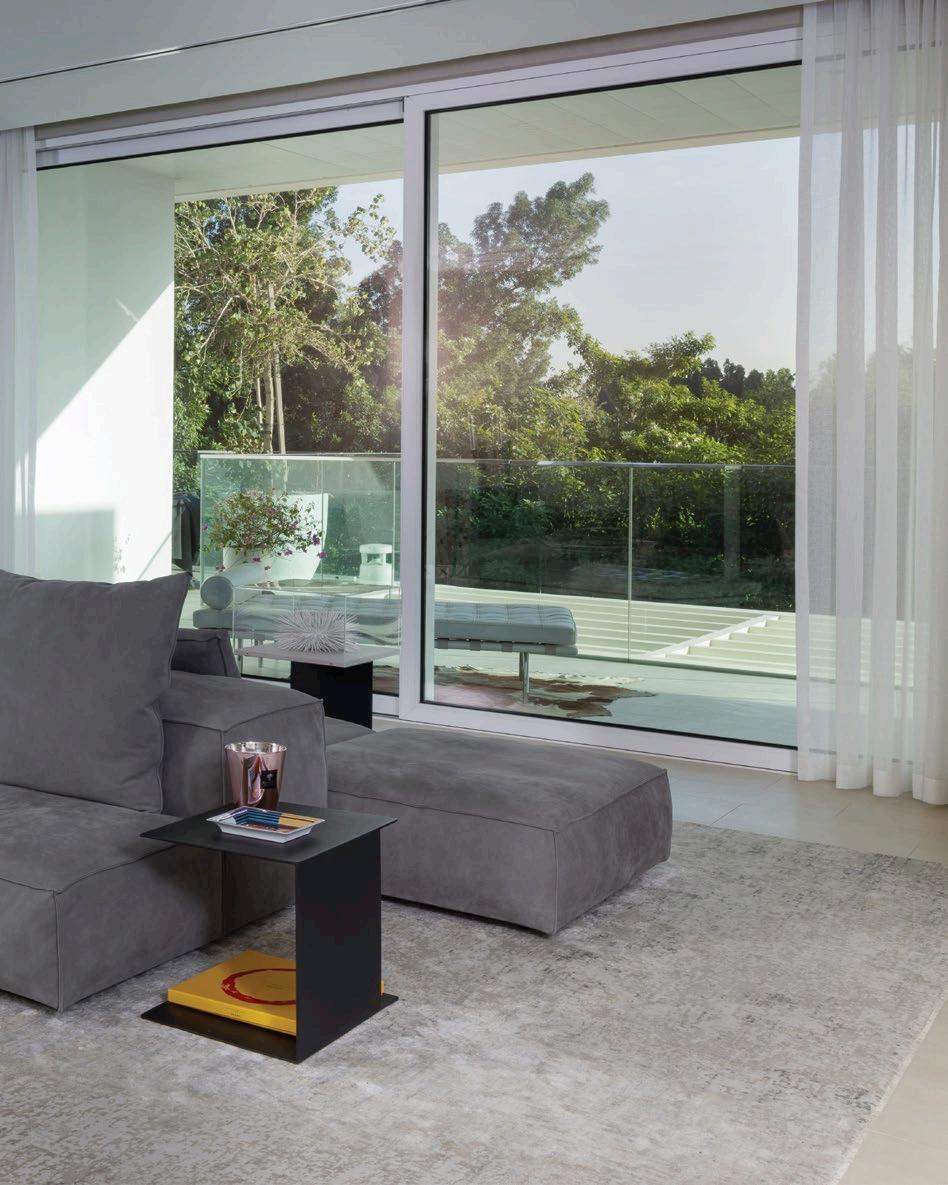
This page: Anthony Youhana stands next to the custom fireplace in the living room. Next page, from top: The Barcelona day bed was chosen to add a modernist twist to the oudoor space that wraps around the apartment. The dining area is spatially removed from the living area; however, the use of unpolished Travertine across the apartment has been used to unify the interiors. It also deliberately features a series of straight lines and sharp angles to celebrate the beauty of geometry

Iam not a designer by profession, but I have designed all the spaces that I’ve lived in throughout the years,” begins Anthony Youhana, a Canadian engineer who is also passionate about photography. With Lebanese-Iraqi ancestry, Youhana has lived in Dubai for the past 33 years. “This project was the largest by far and this is why I worked with two A-list designers in the United Arab Emirates to bring to life the concept I wanted to shape and enrich with their ideas.”
Alamira Noor Bani Hashem and Styled Habitat, led by Rabah Saeid, were those top creative minds. Hand in hand with Youhana, they transformed this 465-square metre apartment with three bedrooms into a minimal, modern space that reflects the homeowner’s personality and maximises the use of natural materials.

The project also had to be in harmony with the Seventh Heaven master project, the high-end residential development in Al Barari where the home is located.
Occupying a quiet corner of the building and with a third of it surrounded by terraces and lush landscaping that goes from Mediterranean to more tropical vegetation, the apartment gives the feeling of living in a detached villa. Thanks to its high ceilings and large windows, it is flooded with natural light. “One of the biggest challenges consisted in imagining how the exterior areas would match the landscape, and how to use vegetation and materials that would endure the harsh summer outdoor conditions,” remembers Youhana, who envisioned a hybrid space that would be a fusion of indoor and outdoor living. The apartment also needed to be a place that could be shared with friends and family, since he loves entertaining.
“My home has a great vibe,” says Youhana. “You can stay in a space for hours without feeling the need to leave it. It is bright and easy on the eyes. There is always music in every zone. It starts with classical music in the morning and moves progressively to more lounge-y sounds, which rhymes well with the night mode and mood of the space. The lighting is also an important enabler.”

49 THE ART ISSUE interiors
“
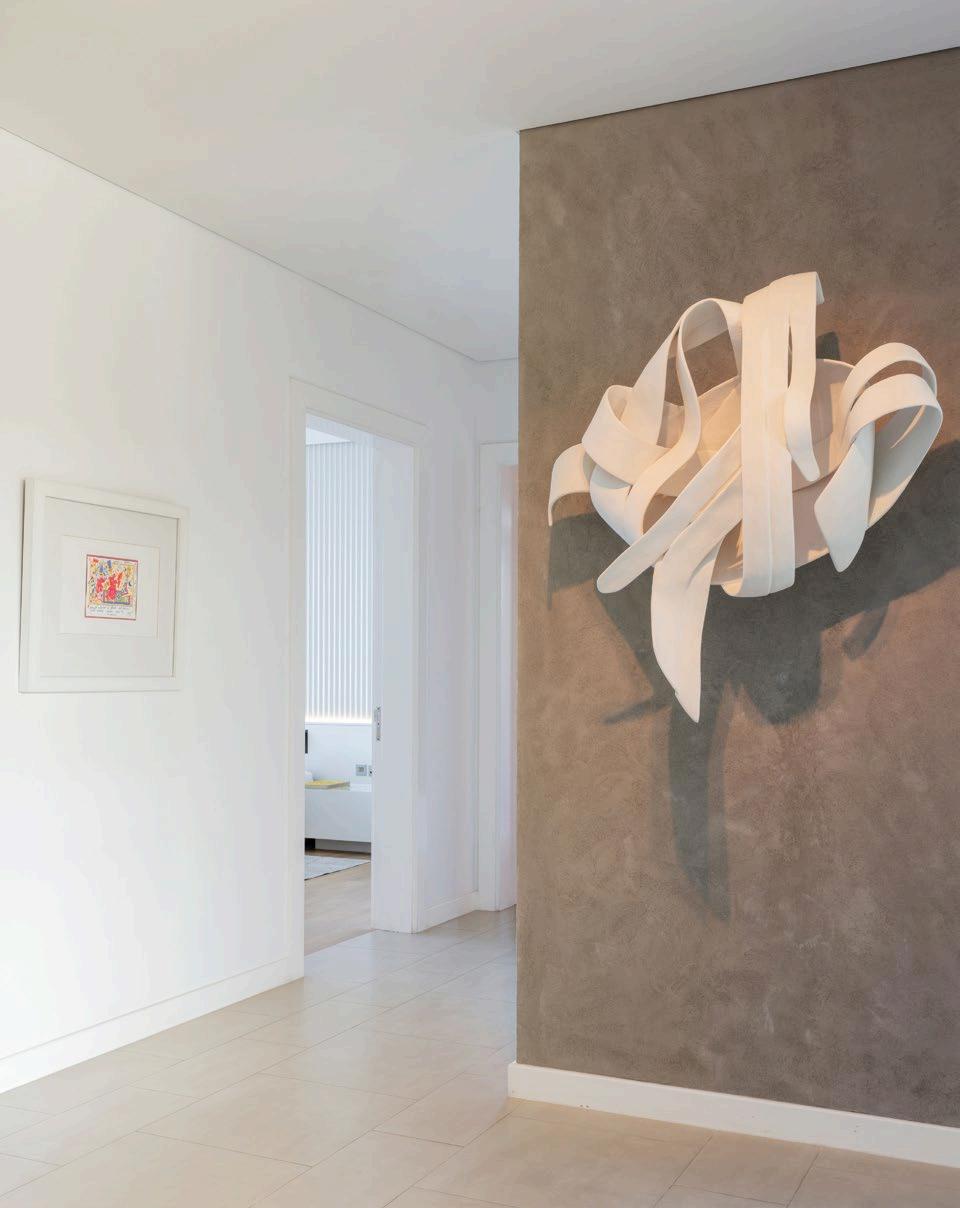

51 THE ART ISSUE interiors
Left page: Artworks by Italian sculptor Iginio Iurilli. This page: A custom stone fireplace was designed for the home by Alamira Noor Bani Hashem, to be used when the temperatures drop during the winter months, and doubles as a beautiful statement piece
In every corner, Youhana installed intelligent audio systems by Bose and Sonos, and took months to curate the perfect pieces. “The main lounge sofa set by Living Divani was an important part of the minimal design of the home,” he says. “It was first chosen with the right colour and material, then the rest of the room followed.”
Furniture and lighting by Moroso, BoConcept, Alivar, Davide Groppi, DCW éditions and Flos – among others – dialogue with art and accessories by Iginio Iurilli, Hermès Home, Christofle, Fornasetti and Nada Debs.
“I dislike clutter, even in my personal fashion style and selection,” says Youhana. “I love colours that do not get too affected by trends. I also like to accentuate with valuable objects to give the whole a great sense of taste. In fashion, I always invest in high-quality shoes that would look great
even after years of use. I follow the same when it comes to choosing sofas, carpets, music systems and electronics.” Earthy tones of concrete, beige and brown combine with limestone on the chimney, travertine in the dining and main bedroom, cherry wood in the furniture, as well as leather and nubuck in a Zen and luxurious atmosphere.
During weekdays, Youhana particularly enjoys his study/TV room with perfect sound in the evenings. On the weekends, he usually spends time with his guests on the large terrace and bar, especially from October to June.
“I am happy when I work from home, even if that is for hours,” says Youhana. “Time flies by and I never get bored. I also feel extremely proud when visitors share great opinions about the space, decoration, landscape and vibe. I feel energised and fulfilled here.” id
This page, from left: The bedroom – designed by Styled Habitat – uses dark tones for the walls in order to draw all the attention to the lush natural greenery outside, making one feel like they ae surrounded by a forest of trees. The en-suite bathroom offers the feeling of being in one’s own luxury resort. Next page: The dressing room features layers of darkcoloured glass that matches the walls and the dark wood


52 interiors
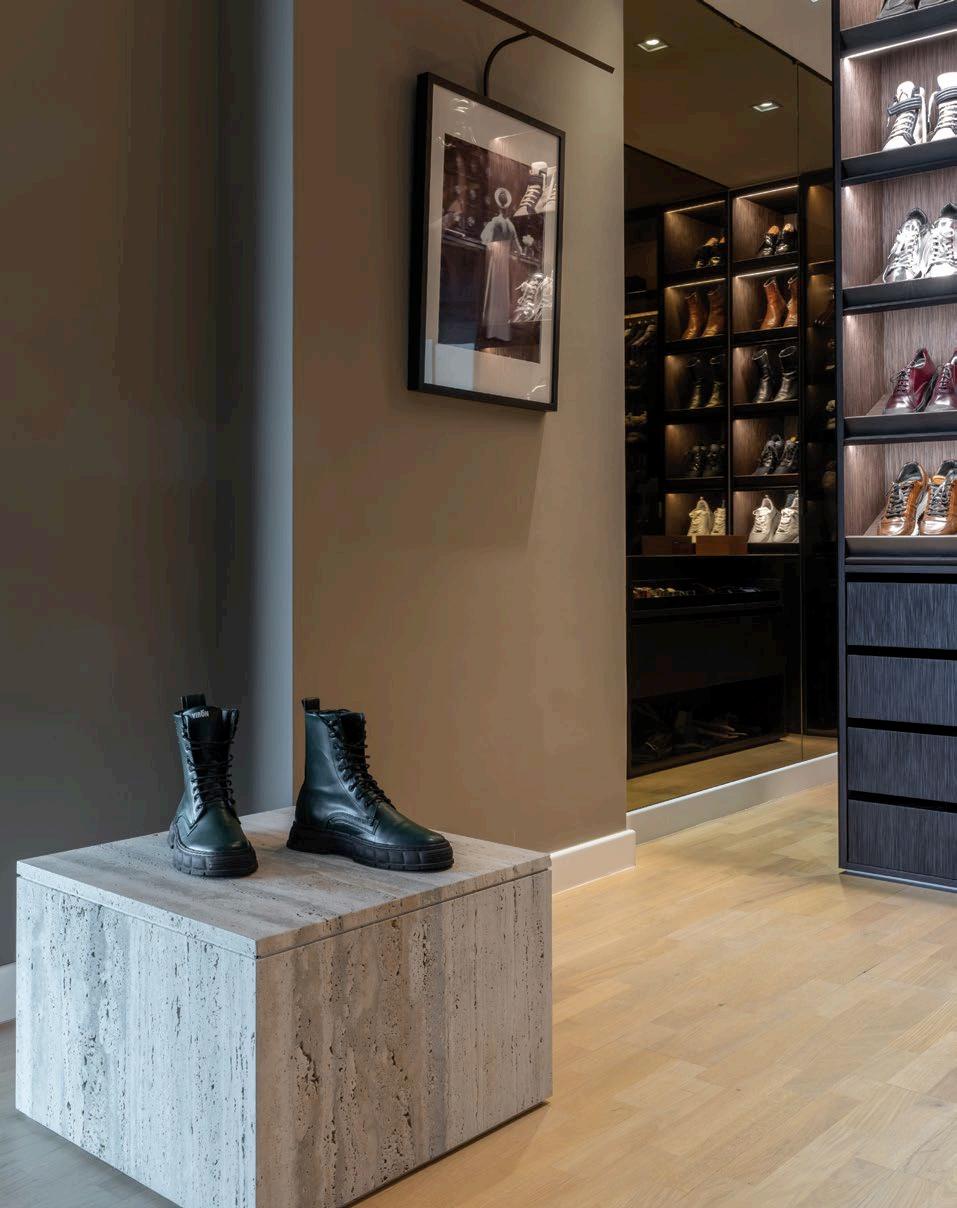
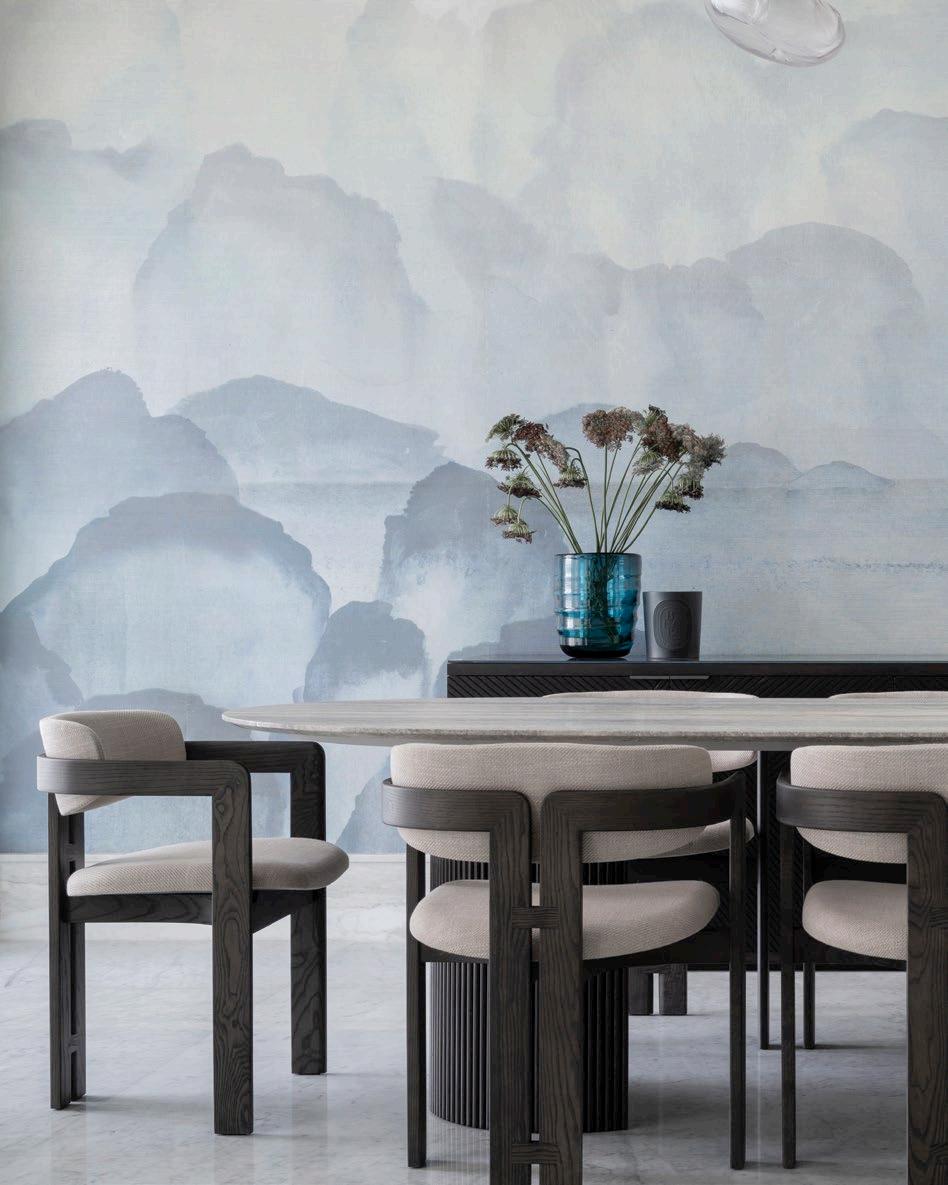 The dining room features wallpaper from Phillip Jeffries, a custom silver travertine dining table with smoked oak legs, Gallotti&Radice dining chairs and a blown glass lighting fixture from Bocci
The dining room features wallpaper from Phillip Jeffries, a custom silver travertine dining table with smoked oak legs, Gallotti&Radice dining chairs and a blown glass lighting fixture from Bocci
Beachfront glamour

Urjowan Interiors has transformed this Dubai penthouse into a luxury vacation home for a Saudi family who wanted both style and accessibility
WORDS BY KARINE MONIÉ
PHOTOGRAPHY BY NATELEE COCKS

56 interiors
The foyer – which leads to the main living space – was demolished and enlarged to include a small doorway and a Statuario marble arch, and features wall lights in alabaster and metal by Kelly Wrestler, as well as metal trim framing on the cove ceiling to match the custom metal staircase
Sitting on the 10th floor of the Shoreline building – one of the oldest on the Palm Jumeirah in Dubai – with spectacular views of the sea and the Burj Khalifa, this two-storey, 340-square metre apartment with four bedrooms, five bathrooms and two living spaces required a lot of work to get it to its current state.
“The apartment needed a full renovation,” says Saudi interior architect Urjowan Alsharif, founder of her Dubai-based studio Urjowan Interiors. “Nothing was usable or salvageable, so we gave the penthouse a fresh new look to help not only with the aesthetic, but also with functionality.”
The team had to also take into consideration the special needs of one of the family members, who is a person of determination. Making the space accessible was at the heart of the project, where a glass lift was installed, all the doors were enlarged, and the bathrooms were designed according to ADA standards.
“The biggest challenge was to conceive a luxury escape that is also wheelchair-friendly,” says Alsharif, who took three months for the design and three additional months for the execution.
Focusing on natural textures, the design team shaped two bespoke Statuario marble arches in the apartment: one on the ground floor to frame the entryway to the double-height space, and one on the first floor leading to the bedrooms. The same marble was also used for the high skirting that wraps around the entire space and serves to ’protect’ the wall from the wheelchair. The new glass railing, with a bespoke smoked brass metal frame, and the stairs reflect a beautiful grain, flowing seamlessly from the ground up. Urjowan Interiors opted for the same bespoke metal to adorn the trim of the seven-metre-high ceiling. “We used seven different stones and marbles in the project, which all play so well off of each other,” Alsharif describes.
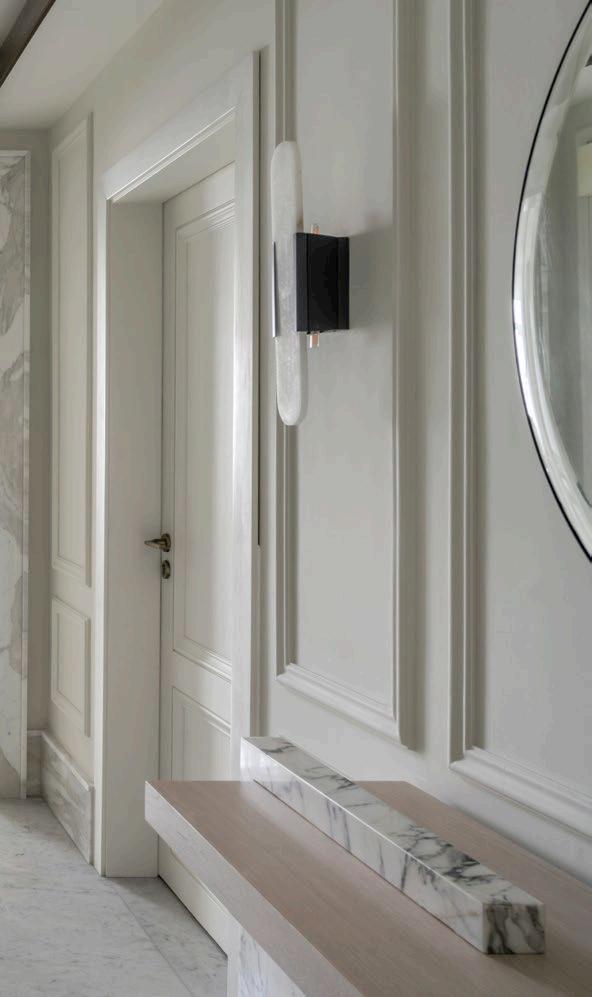
57 THE ART ISSUE interiors
Travertine and oak, as well as soft grey walls with moulding – which added a touch of sophistication –complement the harmonious atmosphere, where the light and airy palette combines with soft textures and rich hues of sand and sea blues. The result is a laidback yet elegant look and feel that the owners desired.


“The design aesthetic was centred around this effortless luxury that goes so well with beachfront living,” says Alsharif, who drew inspiration from the surroundings to introduce a coastal vibe to the space. “We wanted the owners to feel like they are in a five-star resort hotel.” Designed to host the extended family whenever they visit Dubai, the penthouse comprises three guest bedrooms that were designed according to the same Zen concept, but with different accent tones. In the different spaces of the apartment,
colour is injected through a few pieces such as the Phillip Jeffries wallpaper in the dining room, with blue tones echoing the outside views and dialoguing with the floor-to-ceiling Palissandro blue marble that acts as a backdrop for the TV in the living room. In the powder room, the bold green marble, called Cipollino Nuvolato, is also reminiscent of the sea.
“We like building a narrative around crafting second homes – an escape, a sanctuary away from the daily routine,” Alsharif shares. “We noticed [that] clients are more susceptive to approve bolder design choices in their second homes.”
Through fine craftsmanship, intricate detailing, a careful selection of textures and layering of materials, this penthouse reflects everything an elevated coastal home should be. id
58 interiors
This page, from left: Urjowan Interiors experimented with creating a light and airy custom console using acyylic to give it a floating appearance. It is enhanced by a ceramic 3D artwork by Luxiinova. The guest bedroom features an accent chair from &tradition and a fully custom wardrobe. Next page: The staircase features a new glass railing with a bespoke smoked brass metal frame, with the stairs using the same Statuario grain that flows seamlessly from the ground up

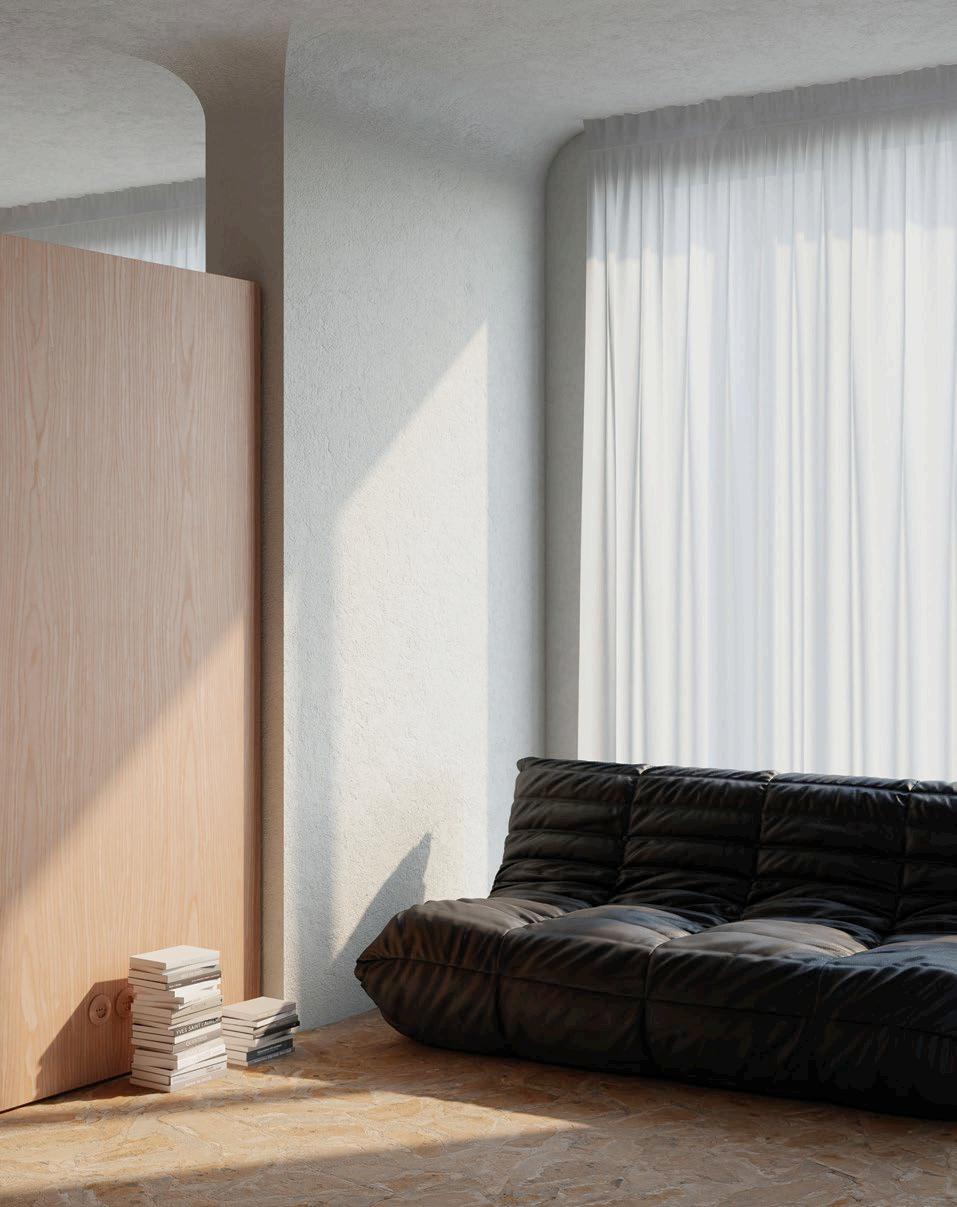 The small living area features the Togo sofa without arms in black leather, designed by Michel Ducaroy and produced by Ligne Roset
The small living area features the Togo sofa without arms in black leather, designed by Michel Ducaroy and produced by Ligne Roset
Essential focus
WORDS BY KARINE MONIÉ
PHOTOGRAPHY BY IHOR HAVRYLENKO
61 THE ART ISSUE interiors
In Kyiv, architect Ihor Havrylenko – founder of Hi atelier –turned this small apartment into a cosy and peaceful home filled with character for a young professional
Afemale IT specialist who works from abroad most of the time but loves her home country of Ukraine “wanted to have a place where she could come back, a place filled with natural sensations and homely warmth,” describes Ihor Havrylenko, who leads his Kyiv-based design practice, Hi atelier.
The architect tackled the challenge of working on a space of slightly less than 52 square metres, which is nestled in a five-storey art nouveau-style building in the city’s Pechersk district. “The
apartment is located in Kyiv, but we wanted to create a modern place that looks like a small cave house near a calm river and a huge forest –something between an old-fashioned Ukrainian house, full of natural textures, and the minimalistic Farnsworth House by Ludwig Mies van der Rohe in the United States,” says Havrylenko. These sources of inspiration guided the palette of natural oak, warm-coloured stone floor and wall covering that looks like light clay. “Before the renovation, all the rooms were very small, so we
decided to remove the wall between the kitchen and the bedroom, and also slightly expanded the bathroom,” says the architect. Now one large space is divided by wooden elements and a low structure-partition, which together define the different areas of the home. Thanks to the open ceiling, it feels larger than it is, with more light. “We didn’t want to pile up the apartment with extra walls and protrusions, so the decision to create one central structure that performs several functions was ideal,” says Havrylenko.
With a dining table for three people in the centre, a work area on the opposite side and a rest area next to the window, the kitchen is the largest space in the apartment. “Everything is as simple as possible,” describes the architect.

The bedroom only features essential elements, including a large bed, wardrobes and a lounge area with an armchair where the homeowner can comfortably read a book or drink her morning coffee. Located near the kitchen area and with an arched entrance, the bathroom was the biggest challenge in this project. “We needed to design a ‘soft’ bathroom, which would be made of stone, a material that in itself embodies strength, power, something very heavy and cold,” says Havrylenko.
This page: The kitchen features a custom oak veneered dining table – on which sits the Opal vase designed by Kristina Dam Studio – and surrounded by Nuevo’s vintage Satine dining chairs made in plywood and covered in dark walnut veneer. By the sofa is a vintage floor lamp, designed by Jean-Pierre Garrault and Henri Delord.
Next page: The bedroom features a custom bed with natural linen covering and a rare floor-to-ceiling lamp made in chromed metal and white Plexiglas, designed by Jean-Pierre Garrault and Henri Delord, edited by Chabrieres in 1971
62 interiors
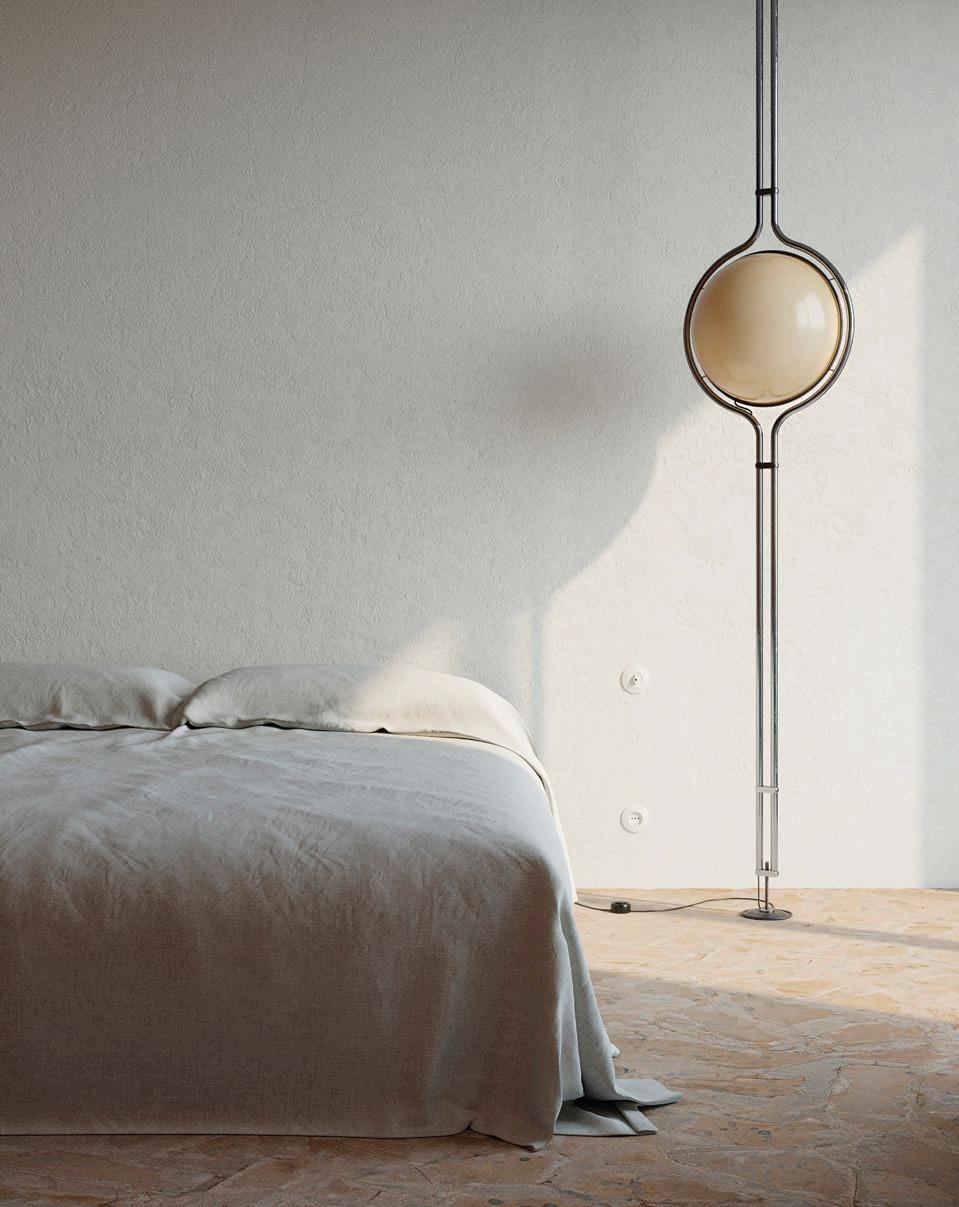
“We thought for a long time about how to make the stone soft, and later came up with the idea of rounding some corners in such a way as to create the feeling of melting ice cream. There are no curtains or visible drawers. To avoid cluttering up the space with unnecessary furniture, we decided to create a hidden cabinet for all the products, which is located to the left of the sink.”
To help make the apartment feel larger, rounded, wave-like shapes are common across the project. With the Carpathian forests and

modern minimalist architecture as references for the design, Havrylenko opted for a palette of natural materials, with brown and beige hues that evoke pleasant feelings. “The homeowner wanted [elements] that are very common in real life, in nature, while walking in the woods or relaxing in a cornfield,” he says. “Bright accents and flashy patterns are not needed in this apartment.”
“The design concept was developed during the third month of the war, which is why the apartment has such sandy tones – in order to create a warm space in which a person would feel protected,” he adds.
Furnished with vintage pieces by Charles and Ray Eames and Jean-Pierre Garrault and Henri Delord – among others – this home conveys a Ukrainian vibe in a nuanced way. id

64 interiors
This page, from left: The sconce by Apparatus in is black leather and tarnished silver. The bathroom features a custom-made stone sink and fired round mirror combined with Falper’s stainless steel tap from the Acquifero_Arco collection, designed by Italian designer Victor Vasilev. Next page: Wooden elements and a low structure-partition together define the different areas of the home

A modern gateway
LW Design has interpreted the interiors of Dubai’s landmark Bab Al Shams resort with a contemporary touch
WORDS BY AIDAN IMANOVA PHOTOGRAPHY BY NATELEE COX
Having first opened on National Day in 2004, Bab Al Shams became an icon of sorts as one of the Dubai’s few ‘desert resorts’, tucked away from the usual hustle and bustle of the city, and surrounded by sandy dunes and a rich ecosystem. Now under the management of Kerzner International – part of its newly launched Rare Finds brand – the luxury property has undergone a nine-month renovation by LW Design to mark a new chapter in its long-standing history. While the role of heritage had always been central in defining the resort, LW Design was tasked with injecting contemporary elements into the interiors, while still paying homage to the desert culture of the region.
The entrance to the resort announces itself with a restrained material palette, blending with the Barasti-style canopies, abode walls and columns
that mimic the vernacular-inspired architecture. The new porte-cochère provides a threshold with dappled shade, while the original carved and metal-studded doors have been re-stained for a nostalgic feel. The arrival experience into the foyer features locally inspired slatted screens that guide visitors to the reception desk, while the banquette – centred on the solid walnut reception desk – is the focal point of the check-in area.
The interior designers also worked with art consultants Capsule Arts to curate the art and artefacts that interweave the visual narrative with that of the interiors. One of the pieces is the hanging textile art behind the reception desk, by Iranian artist Mahsa Baraghani, inspired by Bedouin jewellery and headdresses worn by Emirati women. In the same area, another textile artwork by Loretta Bilinskaite-Monie features
66 interiors
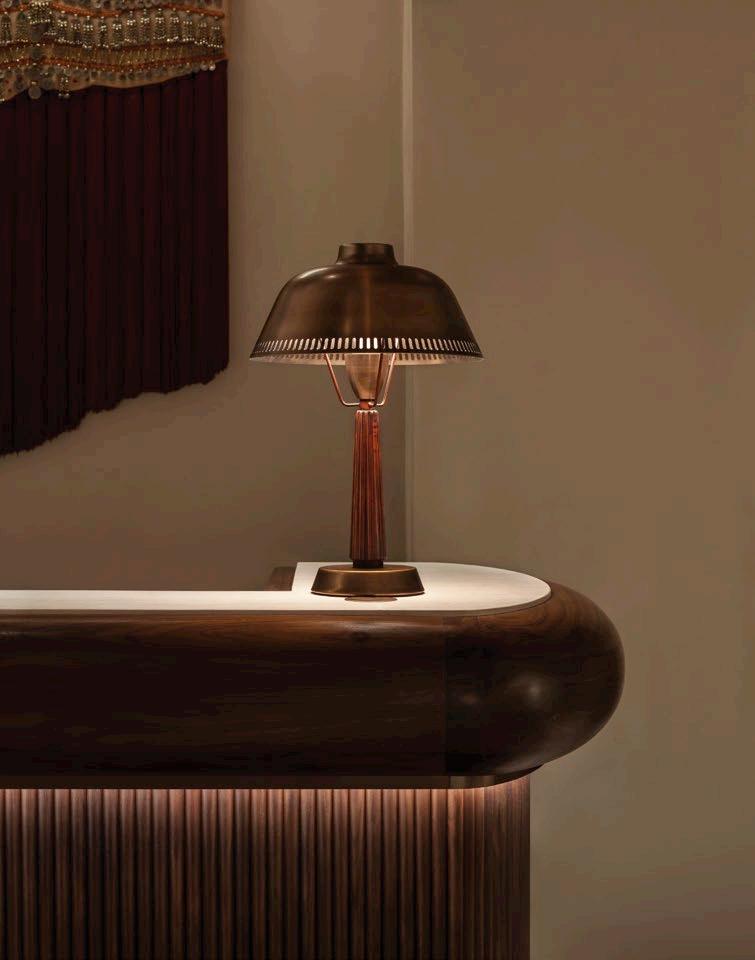

a minimalist interpretation of an embroidered Bisht, a traditional cloak worn in the UAE.
In other areas, works by Emirati photographer Mohammed Ahli present striking views of the Arabian desert, together with contemporary plasterwork on linen canvases, inspired by the hotel’s architecture, by Melissa Charlier. Each piece of art – from handcrafted items and framed objects to textile artworks and contemporary photography – was carefully selected to contribute to the story of ‘the lost princess and her palace of treasures’, chosen as the design narrative for the hotel’s relaunch.
“This approach is a prime example of how hotels can refurbish sustainably and stylishly,” says Rachael Brown, co-founder and creative director of Capsule Arts. “By repurposing existing items and elevating them with expert curation,
the hotel retained its authentic charm and legacy while embracing contemporary design elements.”

The main lobby bar features an ornate counter, detailed with metal studs, walnut wood and mocha cream marble, fashioned as an apothecary table. In the same area, LW Design retained the skylight as one of the key features of the original design, allowing daylight to softly filter through the intricately patterned architectural elements and casting shadows throughout the space. Once the sun sets, the lighting design has been kept intimate and ambient, with fixtures design by Studio Lumen. The furniture has either been restored or handcrafted by local artisans, from the hand-knotted rugs to the jewel-toned upholstery.
The guest rooms and five signature suites have been transformed while also retaining some of their original design elements. The new concrete
floor integrates the indoors and outdoors, while the solid teak doors were stripped and stained to a more authentic natural timber tone, balancing with the soft bastakiya-inspired colour palette synonymous with Bab Al Shams.

To soften and brighten the room – which has small windows and limited daylight – the designers used a lighter colour palette and mirrors to reflect light where possible. Each bedroom has high ceilings, detailed with timber beams and a feature ceiling fan, while many of the items have been re-used and upcycled, including the coat hangers, which have been re-lacquered to complement the new colour scheme.
The standalone spa building is due to open in April, with two hammams, five treatment rooms, a gym and a yoga deck adding to the experience of luxury in the desert. id
69 THE ART ISSUE interiors
Future forward
From Gentle Monster’s collaboration with Maison Margiela to Ethimo’s megalithic outdoor tables, this month’s mood is all about the futuristic
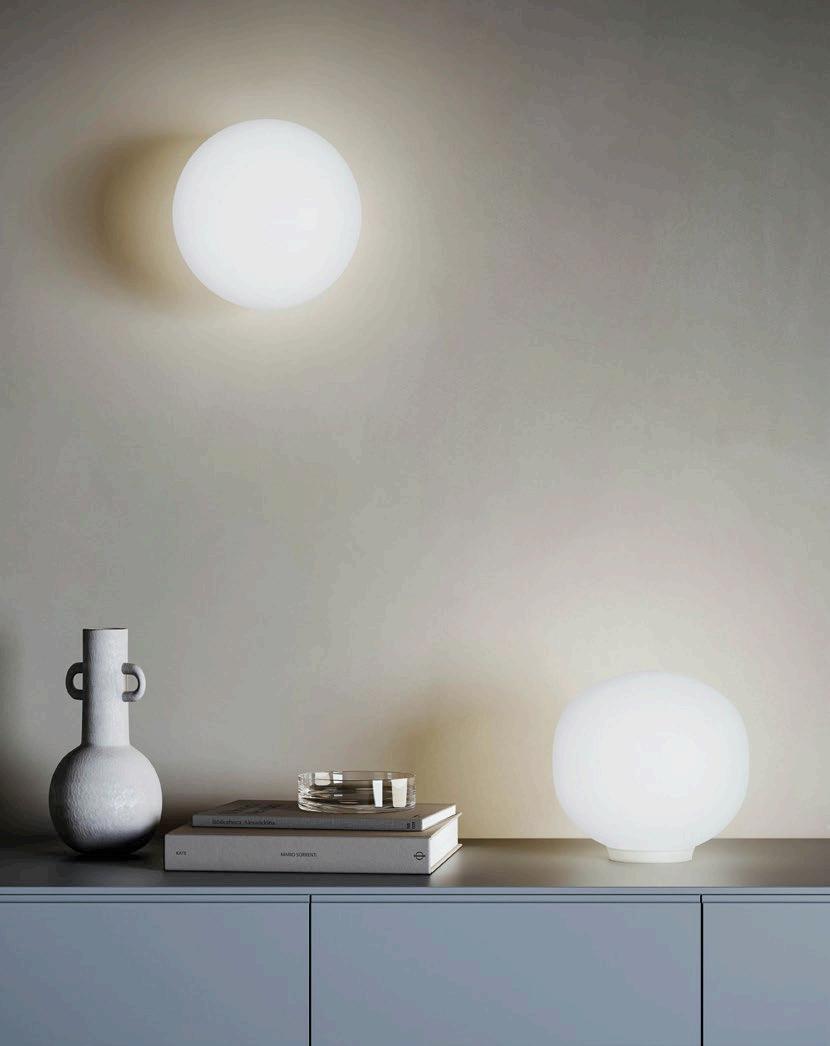
70 products
Volum collection Snøhetta for Lodes Available at lodes.com
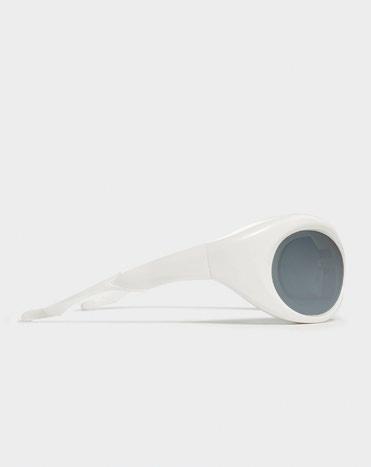
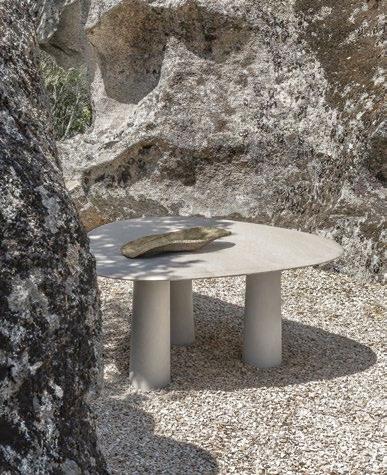





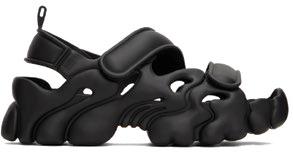
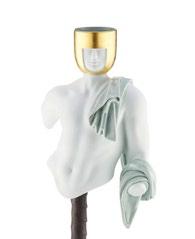

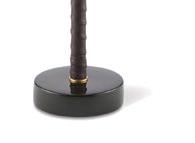



71 THE ART ISSUE products
1. GALAXY OF 9 EVENINGS from the Bold Collection by Gentle Monster x Maison Margiela. Available at gentlemonster.com
6 4 1 3 2 5
2. Bon Bon cocktail glasses by Helle Mardahl. Available at matchesfashion.com 3. Puff sandals - Black Melissa edition by Collina Strada. Available at ssense.com 4. Bold dining table by Ethimo. Available at ethimo.com 5. L’Amante candle holder by Ginori 1735. Available at thatconceptstore.com 6. Aero SM diffuser by Seaons. Available at ssense.com
Restoring greatness
Phaidon’s Great Women Painters compiles the works of three hundred female painters from as far back as the sixth century – showcasing a wide view of female creativity throughout the ages
WORDS BY AIDAN IMANOVA
The word ‘women’ on the cover of Phaidon’s newly published Great Women Painters has been crossed out for a reason: it asserts that the artists featured in this book are not only great ‘women painters’ – but, simply, great painters. The volume documents the works of over three hundred artists who span five centuries and were born in sixty different countries. It has been inspired by the essay of American art historian Linda Nochlin, ‘Why Have There Been No Great Women Artists’, which urged art historians to rethink their approach to unearthing forgotten female artists, eventually launching

the discipline of feminist art history. In the introduction of Great Women Painters, author and curator Alison M. Gingeras reflects on how throughout history – and even today – the art market has consistently undervalued the work of female artists. “Looking back through six centuries of visual culture, pre-modern women painters had to work against the odds, persevering despite denial of formal artistic training and membership in artistic guilds, as well as surmounting restrictions associated
with their socio-economic class,” Gingeras writes. She explains that the exceptional skills of female painters have been denied the same access as that of their counterparts, which makes it ever more important to trace their talents back through the ages – exactly what Great Women Painters succeeds in doing.
The earliest work featured in the book is a painting of The Last Supper (1568) by Florentine nun Plautilla Nelli, originally painted for the refectory in her convent, which was rolled up in a cupboard for decades and only restored for public exhibition in 2019, while the youngest is by Paula Siebra (aged 25), who has already shown her works at solo shows in New York, Belgium and her native Brazil. The book also highlights a wide range of subject matters in painting – from portraits and self-portraits to landscapes, cityscapes, interiors still life and abstract art, as well as the materiality of paint, including works in oil, gouache, acrylic, watercolour, tempera, encaustic, enamel, spray paint and even puff paint. We also see examples of innovation, such as with Ukrainian-born Janet Sobel (1893-1968), whose abstract ‘drip paintings’ preceded the works of Jackson Pollock.
Organised from A to Z by surname and represented by a single ‘iconic’ painting of each artist’s work along with a short explanatory text, the book – which acts more like an encyclopaedia of sorts – is a much-needed volume that urges its readers to further explore the works and stories of these painters. id

72 library
No. 680 Painting, Rana Begum, 2016



73 THE ART ISSUE library
This page, clockwise from top: No Need of Speech, Lynette Yiadom-Boakye, 2018. L.A. Liberty, Pacita Abad, 1992. Elephant Waterfall, Pat Steir, 1990
Following principles of sustainability and simple disassembly, Gio Tirotto’s SUPER RANDOM System is created for flexible workspaces, allowing it to expand and multiply as needed. The furnishing system is versatile, mobile and stackable, and can be combined in radial clusters or groups of linear bars. Its wood-bending technology allows it to become easily organised yet rule-free, to meet the most unpredictable needs of today’s working environments.

74 id most wanted
SUPER RANDOM System by Gio Tirotto for Manerba
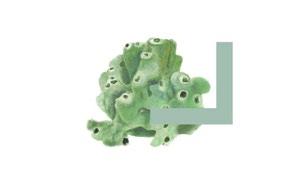
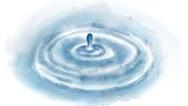

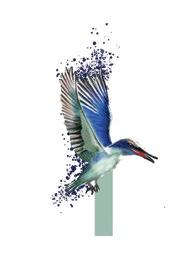



















 Photo by Young Habibti
Photo by Young Habibti















 WORDS BY AISHA ZAMAN
WORDS BY AISHA ZAMAN
















 WORDS BY AISHA ZAMAN
Photography by Laurian Ghinitoiu
WORDS BY AISHA ZAMAN
Photography by Laurian Ghinitoiu





 WORDS BY AIDAN IMANOVA
WORDS BY AIDAN IMANOVA
 Photography by Danko Stjepanovic
Photography by Danko Stjepanovic









 WORDS BY AISHA ZAMAN
Left: Untitled (The Drinker), Fouad Kamel Next page: Disembodied 5, Hayv Kahraman (2012)
WORDS BY AISHA ZAMAN
Left: Untitled (The Drinker), Fouad Kamel Next page: Disembodied 5, Hayv Kahraman (2012)












 WORDS BY KARINE MONIÉ PHOTOGRAPHY BY AASIYA JAGADEESH
WORDS BY KARINE MONIÉ PHOTOGRAPHY BY AASIYA JAGADEESH









 The dining room features wallpaper from Phillip Jeffries, a custom silver travertine dining table with smoked oak legs, Gallotti&Radice dining chairs and a blown glass lighting fixture from Bocci
The dining room features wallpaper from Phillip Jeffries, a custom silver travertine dining table with smoked oak legs, Gallotti&Radice dining chairs and a blown glass lighting fixture from Bocci






 The small living area features the Togo sofa without arms in black leather, designed by Michel Ducaroy and produced by Ligne Roset
The small living area features the Togo sofa without arms in black leather, designed by Michel Ducaroy and produced by Ligne Roset
































